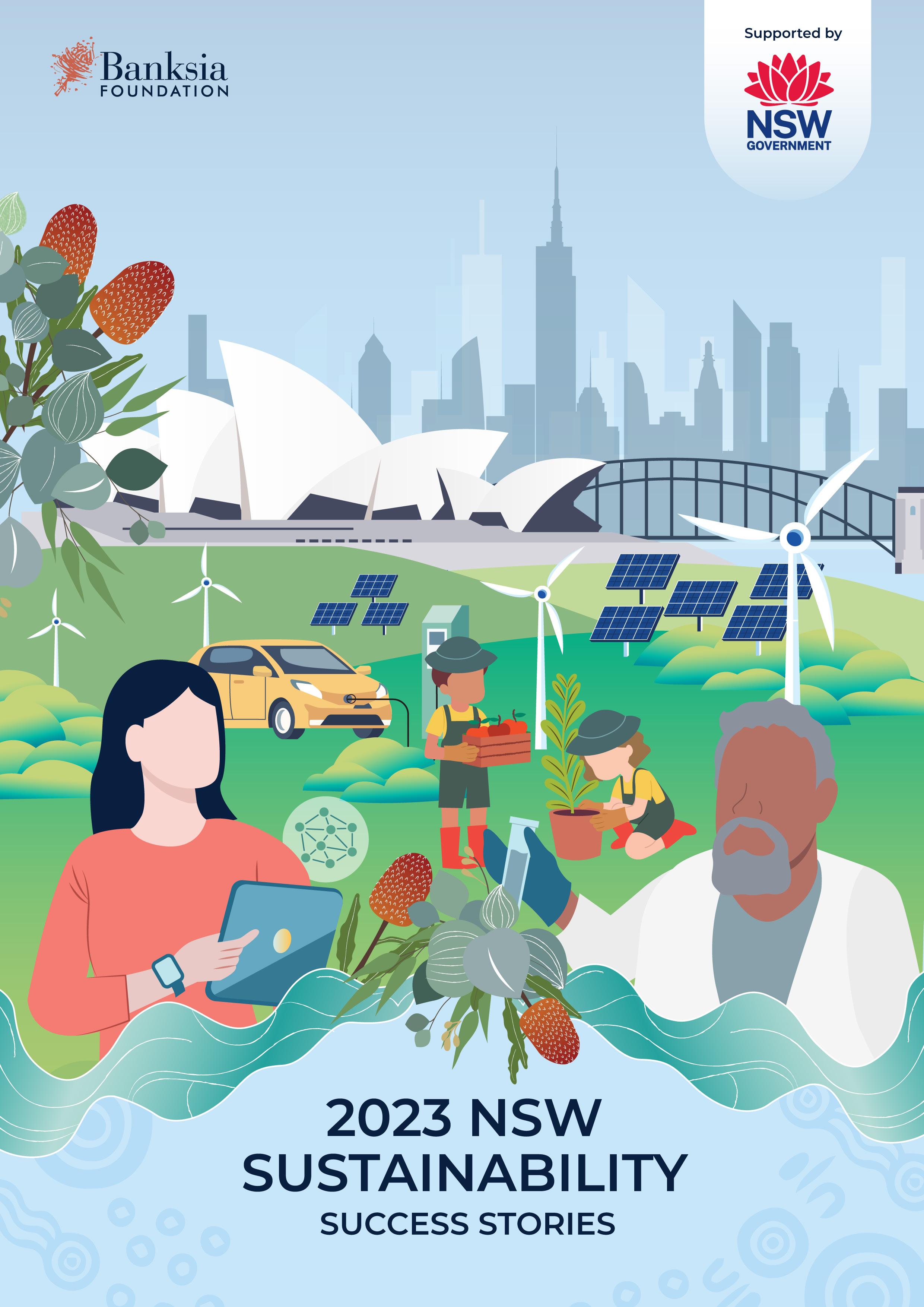
The Banksia Foundation strives to provide accurate and up-to-date information in its publications. However, the Foundation cannot guarantee the accuracy or completeness of content provided by third parties, including winners, finalists, and sponsors. The views and opinions expressed by third parties are their own and do not necessarily reflect the views or opinions of the Banksia Foundation.
Therefore, the Banksia Foundation disclaims any and all responsibility for the correctness of such third-party content. Readers are advised to use their own judgement when evaluating any information presented in this publication.
Copyright © 2023 Banksia Foundation
All rights reserved. This book or any portion thereof may not be reproduced or used in any manner whatsoever without express written permission of the Banksia Foundation except for the use of brief quotations in a book review.
Printed by Digital Printing HQ, Melbourne, Australia
First printing, 2023. www.banksiafdn.com
Our Supporters
The Banksia Foundation gratefully acknowledges the support we receive from our sponsors and partners.






Contents The Reconnect Project Southern Sydney Regional Organisation of Councils 23 25 Biodiversity Award 13 Upper Murrumbidgee Demonstration Reach Cooling the Schools Sydney Randwick City Council 15 17 19 01 Welcome from the Minister Belltrees Public School Blacktown North Public School Cowra Public School Tarrawanna Public School 05 07 09 11 Minister's Young Climate Champion Award 03 Circular Economy Award 21




Rheem Australia Pty Ltd Orica Penguin Random House ANZ 53 55 57 Climate Technology Impact Award 27 SIMPaCT (Smart Irrigation Management for Parks and Cool Towns) BGIS & Cresstec Green Eco Technologies Wattwatchers Digital Energy 29 31 33 35 Port of Newcastle Opal Healthcare Teachers Mutual Bank Limited 45 47 49 Action4Agriculture Return and Earn NSW Container Deposit Scheme 39 41 Communication for Impact Award 37 Large Business Sustainable Leadership Award 43 Net Zero Action Award 49



Parramatta Light Rail Stage 1, Transport for NSW SIMPaCT, Western Sydney University 59 61 Oceanfarmr Dr Amy Moss & Dr Hiep Dao, University of New England Lorraine Gordon 65 67 69 Primary Industries and Regional Development Award 63 Responsible Supply Award 71 Underwear for Humanity Ventia 73 75 Underwear for Humanity Joonga Land and Water Aboriginal Corporation Randwick City Council 79 81 83 Small to Medium Enterprises Sustainable Leadership Award 77 Placemaking Award 57

Sustainable Tourism Award 85 Take 3 for the Sea Kestrel Nest EcoHut and Highfield Farm & Woodland Thredbo Resort Taronga Conservation Society Australia 87 89 91 93
Board Members






01
Rick Finlay Treasurer
Grazyna van Egmond CEO
Andrew Petersen Chair
Jo Cain
John Valastro
Mark Peterson
Estelle O’Callahan
Minister’s Foreword
The NSW Government has proudly supported the NSW Sustainability Awards since they began in 2021. The NSW Sustainability Awards recognise and encourage the innovation in sustainability that we need to reach net zero and reduce the impact of climate change. The examples of ingenuity and determination set by the finalists and winners featured in these Sustainability Awards success stories show that, together, we can achieve a net zero future.
Moving early on new technologies increases opportunities for NSW businesses to develop goods, services and business processes that are globally competitive and create new market opportunities. Our award winners are proof that being sustainable makes good business sense.
What inspires me most are our Young Climate Change Champions. If these young people are any indication, the world is in safe hands. Not just in the projects they create, but in the way they display their commitment and inspire their fellow students, building sustainable cultures within their schools and reaching out into their communities. This collaborative spirit is something all winners share and proves to me that we are indeed united in our determination to tackle the financial, social and environmental challenges ahead and preserve our planet for generations to come.

The NSW Government is committed to help lead the fight against climate change. That is why we legislated our emissions reduction targets as part of the Climate Change (Net Zero Future) Act 2023 and will establish an independent Net Zero Commission to monitor, review, report and advise on progress towards these targets. We will continue to work with local governments and organisations, businesses, households, and Traditional Owners, to protect the lands we walk on and the communities we walk with.
The challenges are many and none of us can do this alone. I encourage you to read and share these stories widely to inspire others to join our winners in their quest to meet the challenges of climate change and help build a sustainable net zero future.
 The Hon Penelope Sharpe MLC
The Hon Penelope Sharpe MLC
Minister for Climate Change, Energy, the Environment, and Water
02
Minister’s Young Climate Champion Award
03

Belltrees Public School
Successfully avoided 11.14 tonnes of CO2 emissions since October 2022
Website: belltrees-p.schools.nsw.gov.au/
Nestled in the heart of New South Wales, Belltrees Public School has emerged as a trailblazer in environmental education and sustainability, defying its size to become the benchmark for schools across Australia. In the face of the worst drought in a century, the students, known as Young Climate Champions (YCC), have undertaken a transformative journey, implementing initiatives to significantly reduce their carbon footprint and embracing regenerative principles to nurture their patch of the planet.
5
YOUNG
MINISTER’S
CLIMATE CHAMPION AWARD
WINNER 2023
Belltrees Public School adopts a holistic approach to environmental initiatives, focusing on the synergy between projects and the enhancement of the natural environment. The Youth Environmental Council, comprised of students, staff, and community members, plays a pivotal role in identifying, planning, and implementing these initiatives. This collaborative process is seamlessly integrated into the curriculum, fostering a culture of inquiry, problem-solving, and agency among the students.
Projects and their Impact:
Net-Zero and Beyond:
The YCC at Belltrees Public School have successfully avoided 11.14 tonnes of CO2 emissions since October 2022, equivalent to the emissions generated by the school bus over three years. This achievement is complemented by energy conservation strategies that have saved 24.34kL of water usage. These initiatives showcase the school's commitment to sustainability, with detailed information available on the ZP4S profile page in supporting evidence links.
Waste Minimisation:
Through effective reduce, reuse, and recycle initiatives, the YCC have reduced the school's landfill contribution by over 66%, resulting in a significant reduction from 720L weekly to less than 240L a fortnight.
The Blue Lid Initiative, involving the collection and processing of over 10,000 bottles from local businesses, has played a crucial role in achieving these remarkable results. Over two years, up to 20,000L of resources have been diverted from landfill, making a substantial impact on the school's ecological footprint.
Carbon Sink Ponds Project:
In collaboration with the community, the YCC have transformed the landscape through the Carbon Sink Ponds Project. This initiative addresses water management, rehydrates the agriculture plot, reduces nutrient excess, and mitigates soil degradation. Over 500 native grasses, shrubs, and trees have been planted, creating habitats, filtering water run-off, and contributing to carbon sequestration. Detailed information is available in the Environmental Sustainability – Water section of supporting evidence.
Slow Food Strategy:
Embracing the slow food strategy, the YCC have cultivated an underutilised paddock into a flourishing orchard with diverse fruit trees. This initiative, aligned with the paddock-to-plate concept, not only supports the school's cooking program but also provides fresh produce to the local community. The NSW Sustainable Communities – Slow Food Strategy section in supporting evidence further highlights the success and impact of this initiative.

A Journey to Regeneration:
Belltrees Public School's YCC, embodying the role of future agricultural leaders, have rehabilitated a barren school paddock into a thriving agricultural plot. Through practices such as rotational grazing, ground cover management, and multispecies cropping, they have revived the soil's nutrient density. The YCC have not only implemented these principles but have also taken the lead in educating over 200 visitors and school groups about Regenerative Agriculture, earning them the Community and Engagement Award as outlined in the supporting evidence.
In conclusion, Belltrees Public School stands as a beacon of sustainability and environmental education, inspiring schools across Australia to follow suit. The journey of the Young Climate Champions reflects not just their environmental achievements but also their ongoing commitment to creating a greener and more sustainable future.
6 NSW SUSTAINABILITY SUCCESS STORIES 2023
Blacktown North Public School
This year the Student Leaders of Blacktown North Public Schools were tapped to participate in a Waste Reduction Pilot Program. This consists of waste and litter audits and surveys at the commencement and end of pilot and development of a Waste Reduction Action Plan (WRAP). This group of students are working to complete the
program implementation to the best of their ability, as well as the relevant data collection surveys, to help inform evaluation of the program. It is our goal that BNPS can act as an inspiration to others by the development of a case study to capture learnings and factors and success.
Website: blacktownn-p.schools.nsw.gov.au/
7
MINISTER’S YOUNG CLIMATE CHAMPION AWARD
They have introduced Waste Segregation inside and outside the classroom. Our current waste stream includes --- Blue bins for papers/cardboards; Yellow bins for co-mingled recycling; Red bins for landfill; Orange bins for return and earn; and Compost pails for fruit scraps.
We have done a Waste and Litter Audit in Term 1 to calculate the volumes and types of waste our school generates. It helped us identify the main sources of waste in our school in order to implement change.
We created a Waste Reduction Action Plan to enumerate the steps we will undertake to implement change, that is to reduce rubbish ending up in the landfill.
New waste stream was presented in the school assembly. Colour-coded bins were introduced gradually. SRC leaders monitor segregation in their respective classrooms. 1/2S class spearheaded the Bin Guardians whose main task is to monitor the trash being thrown by the students in colour-coded wheelie bins in the playground area.
Another Waste and Litter Audit was completed in Term 3 to see the impact of the project. As proven by the data collected, there was a significant decrease in the amount of rubbish collected that will eventually go to the landfill after we have introduced the new waste stream.
BNPS Student Leaders and SRC officers spearheaded the Waste Reduction initiative of the school. They have engaged in Waste and Litter audits to calculate the volumes and types of waste our school generates and created a Waste Reduction Action Plan to enumerate the steps they will undertake to implement change, that is to reduce rubbish ending up in the landfill. The goal is that BNPS students can act as an inspiration to others by the development of a case study to capture learnings and factors and success.
Grade 1/2S spearheaded the Bin Guardians whose main task was to monitor the trash. Students can act as an inspiration to others


8 NSW SUSTAINABILITY SUCCESS STORIES 2023
Littie Committee — Cowra Public School


Website: cowra-p.schools.nsw.gov.au/
In the heart of Cowra Public School beats a powerful force for change – the Littie Committee. Comprising eight passionate girls with an unwavering commitment to recycling and saving the planet, this dynamic group has set out to make a lasting impact on their school and beyond.
9
MINISTER’S YOUNG CLIMATE CHAMPION AWARD

Origins of the Littie Committee:
The Littie Committee took root in 2022 when the students were confronted by the staggering amount of waste surrounding their school. Fueled by a desire to transform the situation, they thought, "this is RUBBISH! We need to change this!" This spark led to a meeting with the school principal, and thus, the 'Littie Committee' was born.
Campaigns and Achievements:
Over the past two years, the Littie Committee has orchestrated several major campaigns, successfully decreasing the amount of waste in their school. Their proactive approach to sustainability has created a ripple effect, inspiring positive changes in the school community.
Current Project: Recycled Art Competition:
As their latest initiative, the Littie Committee is hosting a recycled art competition, inviting students to unleash their creativity while promoting the importance of recycling. This engaging project aims to not only beautify their school environment but also serve as a visual reminder of the positive impact of sustainable practices.
Future Endeavors: Involving the Community:
Looking ahead, the Littie Committee envisions extending their influence beyond the school gates. The plan is to involve the local community in their recycling journey, fostering a collective commitment to sustainability. By doing so, they aim to broaden their impact and spread the recycling message far and wide.
Forever Inspired:
The Littie Committee draws perpetual inspiration from the change they can make. Their dedication, enthusiasm, and sustainable initiatives are a testament to the potential of young minds to instigate meaningful change. Through their actions, Cowra Public School's Littie Committee is shaping a brighter, greener future for their community and beyond.
“Littie Committee” comprises eight sustainability-addicted girls with a passion for saving the planet!

Change people’s state of mind and bring the recycling message to the world!
10
NSW SUSTAINABILITY SUCCESS STORIES 2023
Tarrawanna Public School

At Tarrawanna Public School, our journey towards sustainability has been a transformative experience, driven by a deep commitment to addressing local challenges and fostering a harmonious relationship between our community and the environment.
In our quest to become a sustainable institution, we delved into the intricacies of issues within our community. We learned about the delicate balance needed to restore and nurture our environment while exploring the dynamic interplay between people and places. This journey has empowered us to take ownership of our role in solving community issues.
Website: tarrawanna-p.schools.nsw.gov.au/
11
MINISTER’S YOUNG CLIMATE CHAMPION AWARD

Our pivotal project centers around combating hunger within our community and providing sustenance for our native animals. The first step was recognising the gaps within our school community—basic human rights, food, and connection. The solution emerged in the form of a community garden that not only addresses hunger but also brings people together.
Teaming up with Elements, we created a permaculture, no-dig garden. Today, after twelve months of hard work, we proudly harvest regular crops for the community and witness the growth of a network of community helpers, fostering meaningful connections.
Inspired by our success in addressing hunger for our community, we turned our attention to the declining wildlife in our area. Collaborating with Wollongong City Council, we embarked on a project to create a 'Tiny Forest.' Workshops with the council helped us identify the types of trees crucial for feeding native
animals in our area. The children actively participated in preparing the soil, selecting plants, and nurturing the gardens. In a remarkable moment, an Aboriginal family with three generations attending our school became the first to plant in the 'Tiny Forest.'
Our sustainability journey has not been without challenges. Maintaining both the permaculture garden and the 'Tiny Forest' required ongoing efforts. To address this, our students initiated an 'environmental league.' Every Monday, enthusiastic students join forces to participate in the maintenance, planting, and harvesting of our garden. All classes take turns in contributing to the upkeep of the 'Tiny Forest.' This approach has not only ensured the longevity of our projects but has also instilled a sense of community ownership.
A key aspect of our success lies in whole community participation. All 160 students actively contribute, fostering a sense of ownership and pride. The benefits extend beyond

the projects themselves; they include cooking produce from the garden, collecting data on birdlife attracted by the 'Tiny Forest,' and creating an enriching experience for our families. Our school is not just a place of learning during the week. On weekends and holidays, our doors are open to the community. The care we invest in our school grounds is evident, with 0% vandalism. This, we believe, is a testament to the sense of ownership instilled in each of our students.
In conclusion, our sustainability journey at Tarrawanna Public School is a testament to the power of community-driven initiatives. Through addressing local issues, fostering connections, and instilling a sense of ownership, we have created a sustainable ecosystem that goes beyond our school walls, making a positive impact on our community and environment.
12
NSW SUSTAINABILITY SUCCESS STORIES 2023
Biodiversity Award
13

Upper Murrumbidgee Demonstration Reach
The Upper Murrumbidgee Demonstration Reach unites communities to create a healthy, resilient and sustainable Murrumbidgee River.

Bush Heritage Australia, Upper Murrumbidgee Waterwatch, Australian River Restoration Centre, University of Canberra, ACT Government, NSW Government, and the Murray-Darling Basin Authority.
Our rivers are in crisis. In New South Wales, inland river systems continue to be affected by water extraction, altered river flows, loss of connectivity and the flow-on effects of land-use changes such as vegetation clearing, the consequence of which impacts all plants, aquatic and terrestrial animals and the people and communities who depend on them.
Website: upperbidgeereach.org.au/



15 BIODIVERSITY AWARD
WINNER 2023
One of the largest collaborations of people by area working to protect any inland waterway in Australia.

In 2010, the Federal Government recognised the need for action on river health and native fish decline and identified four ‘Demonstration Reach’ sites in the Murray-Darling Basin. One of these was the Upper Murrumbidgee Demonstration Reach (UMDR), focusing on a 320km stretch of the upper Murrumbidgee River between Tantangara and Burrinjuck Dams.
The UMDR quickly realised that improving river health comes not just from focusing on ecological values but also social, economic and cultural perspectives – especially Indigenous perspectives. It began community

engagement to identify and address major threats facing the river.
In 2012, government funding for Demonstration Reach programs discontinued, however, the problems did not disappear. In a bold move, the UMDR decided to continue its work without ongoing government support, developing a strategic plan underpinned by a community-led approach, evidence-based science, engagement and collaboration. The partnership includes national conservation organisation Bush Heritage Australia, Upper Murrumbidgee Waterwatch, the Australian River Restoration Centre, the University of Canberra and the
Since 2020, in the aftermath of the Black Summer fires which burnt large swathes of the river corridor, the work of the UMDR has scaled up. In the last two years it achieved:
- 44 hectares of revegetation, with 40,000 plants
- 44km of weed control
- Erosion control at 20 sites
- 30 volunteer days
- 4 Aboriginal Water Assessment days with the Ngunnawal community
- 1,000+ people engaged through events and activities, including 45 local landholders.
ACT Government with support from the NSW Government (Department of Primary Industries-Fisheries, Local Land Services) and the Murray-Darling Basin Authority. Today, the UMDR has grown into an unlikely community of people made up of farmers, landholders, conservationists, Traditional Custodians, volunteers, fishers, government and scientists –and one of the largest collaborations of people by area working to protect any inland waterway in Australia, who have overcome many obstacles to achieve their vision.
These works have improved habitat for significant species such as the Macquarie Perch, Murray Cod and Platypus. It has improved water quality by addressing erosion and sedimentation, after the fires caused rock, earth and vegetation slide into the river. Community engagement has helped to foster river stewardship and connect people with this spectacular river.
The UMDR has demonstrated that instead of competing over a scarce resource, cross-community collaboration can enable people to support the river that supports them, making it more healthy, resilient and sustainable.
16 NSW SUSTAINABILITY SUCCESS STORIES 2023
Cooling the Schools Sydney
The Cooling the Schools Sydney program connects kids to nature and empowers them to take action in their communities to create greener, cooler places where people and nature thrive.
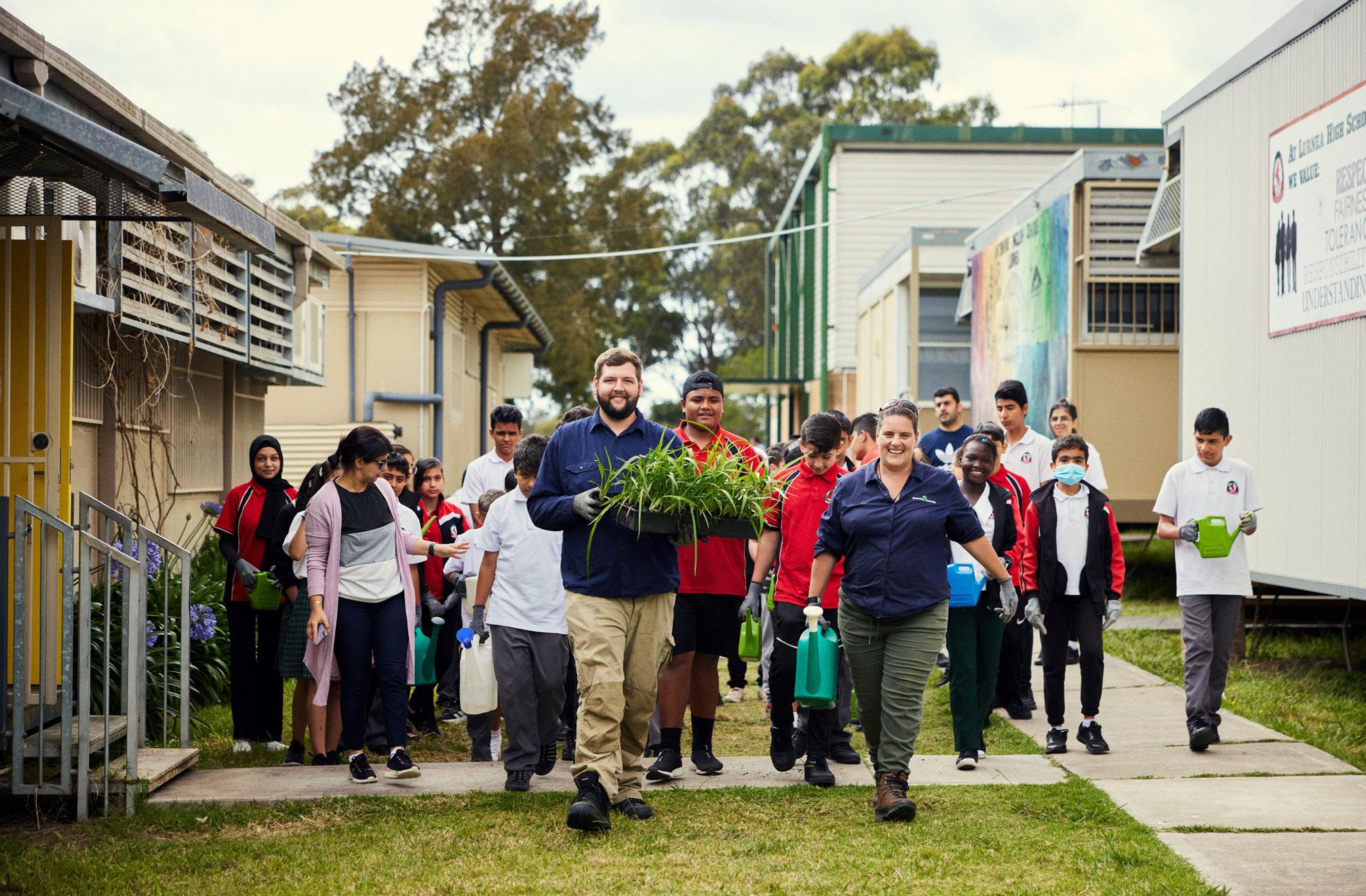
Greening Australia, NSW Department of Planning and Environment, Schools Infrastructure NSW.
Cooling the Schools Sydney is a unique environmental engagement program which connects kids to nature and empowers them to take action in their communities to create greener, cooler places where people and nature thrive.
Website: greeningaustralia.org.au/
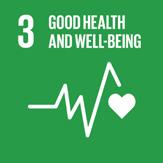





17
BIODIVERSITY AWARD

With increasing summer temperatures and Sydney’s population expanding into the hotter and dryer western suburbs, the program provides a nature-based solution to the problems of heat and climate change.
Cooling the Schools Sydney works with schools across the Greater Sydney region to provide free planting sessions that empower students to create wildlife habitat, reduce urban heat and increase tree canopy cover in their schools. The program is offered to all schools: public, private, primary and secondary and tailored to the local site conditions.
Delivered by Greening Australia, in partnership with the NSW Department of Planning and Environment and Schools Infrastructure NSW, the program

is proudly funded by the NSW Government through the Climate Change Fund to help achieve 40% canopy cover in Greater Sydney by 2036.
Led by restoration ecologists and co-delivered with Aboriginal cultural education provider Deadly Ed, students get their hands dirty while learning about the environmental and cultural value of native plant species. Thanks to a partnership with the National Parks & Wildlife Service the program also provides opportunities to teach students with learning resources aligned with the national curriculum.
The program also sets out to involve local communities in areas with the lowest canopy cover who were most vulnerable to the urban heat island effect. Community planting events are
Despite being delivered during the COVID-19 pandemic, and during a period that witnessed flash flooding and extreme weather conditions both in terms of heat and rainfall, the results have been impressive so far:
- 87,122 trees planted
- 63,740 trees planted at community sites
- 23,382 trees planted at schools
- 12 community events
- 84% survival rate of community plantings
- 130 school site visits and site plans delivered
- 9,713 school students engaged
- Published lesson plan resources aligned with the national curriculum.
held in Greater Sydney to establish urban ‘micro-forests’ as living legacy landmarks for the local community. Over time these micro-forests will grow and become important sources of shade, cooling and recreation in local green spaces.
Whilst the measurable outcomes to date have been outstanding, the true value of the program has been in the promotion of nature to the next generation through fun and hands on learning. By learning to value trees and habitat for the many services that they provide, it is hoped that local communities will take ownership and protect, enhance and advocate for our nature in cities moving forward.
“Both staff and students commented on how much they enjoyed the experience and how much they had learnt. They are very caring of the areas they planted. Thank you for the experience, I think the work on that day will be a legacy for our school.”
Testimonial from a participating school in Riverwood, Sydney.
18
NSW SUSTAINABILITY SUCCESS STORIES 2023
Randwick City Council
Randwick City Council embarked on a transformative journey, to enhance urban environments through tree planting programs, fostering community engagement and well-being, aligning with Sustainable Development Goals.
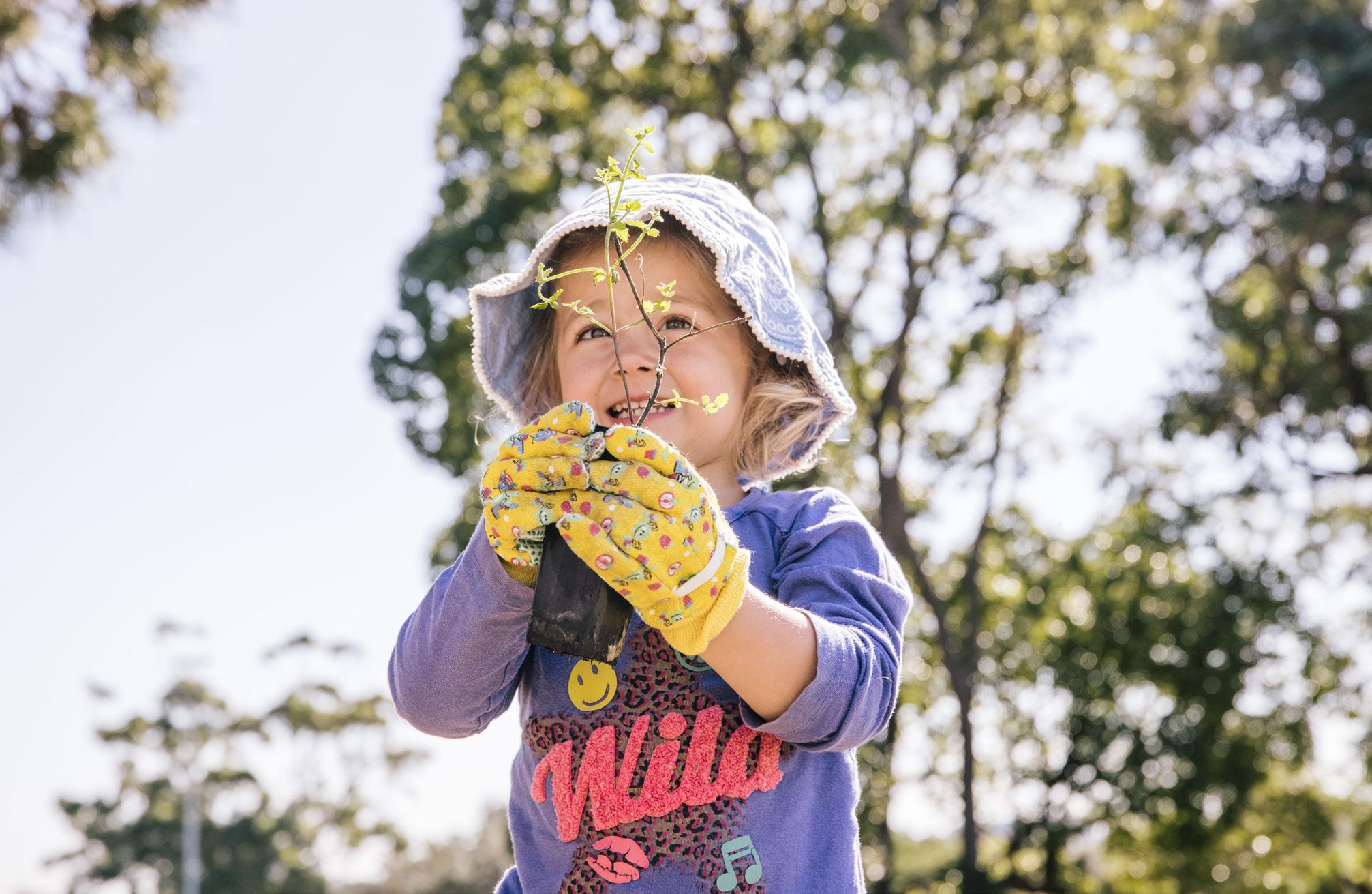
In response to funding received from the NSW Greening our City, the local government authority, Randwick City Council (RCC) embarked on a transformative journey to enhance its urban environment through two key programs: ‘Planting with Us’ and 'Request a Street Tree'.
These initiatives aimed to encourage residents, families, and friends to actively participate in tree and plant planting activities in public spaces and along nature strips, with the overarching goals of habitat restoration, urban greening, and community resilience.
Website: randwick.nsw.gov.au/







19
BIODIVERSITY AWARD
Instilling a sense of community, stewardship, and custodianship of green spaces
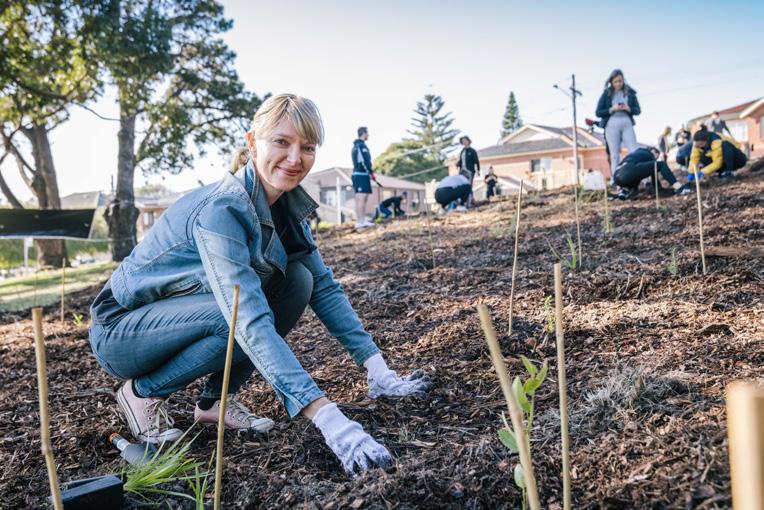
The context of the COVID-19 pandemic underscored the importance of outdoor spaces for community well-being. RCC recognised the significance of this connection in a city where nearly 72% of residents reside in multi-unit dwellings, highlighting the need for accessible green spaces.
The Greening Our City funding initiative provided RCC with a fresh impetus to accelerate open space plantings and align with Sustainable Development Goal (SDG) 17 on partnerships for the goals.
The 'Plant with Us' program introduced the concept of ‘Champion Volunteers’ playing a crucial role in engaging new members and ensuring proper planting. It facilitated knowledge and capacity building by educating participants about the environmental benefits of trees, climate change mitigation, and sustainable urban design, aligning with SDG 4 (Quality Education) and SDG 13 (Climate Action).
The program fostered widespread community engagement by aligning with various national and international events, including Earth Day, World Environment Day, and National Tree Day, as well as addressing mental health and well-being concerns. This approach created a unique 'X factor' by not only planting trees but also instilling a sense of community, stewardship, and custodianship of green spaces.
The 'Request a Street Tree' program allowed residents to request street trees outside their homes, promoting sustainable urban development (SDG 11) and affordable and clean energy (SDG 7). It streamlined the application process and encouraged residents to participate in tree maintenance, building a stronger sense of community belonging.
To ensure the success of these programs, Randwick City Council made significant process improvements, including multi-team coordination, GIS mapping, and data collection, all of which improved accountability and tracking measures for strategic goals. The 'Plant with Us' events also promoted outdoor activities and community unity, contributing to SDG 3 (Good Health and Well-being).
The impact of Randwick City Council's initiatives was significant. Over 1,200 community members participated in 16 large-scale planting events, planting far more trees and plants than initially anticipated. The program exceeded its objectives by planting 4,411 trees and 28,096 understorey plants, contributing to biodiversity targets outlined in the Environment Strategy.
The 'Plant with Us' program achieved its goals of community engagement,

environmental education, and sustainability, creating lasting bonds among residents, organisations, and the city itself. Randwick City Council's commitment to the UN Sustainable Development Goals was not just a nod but an integral part of their operational deliverables, making a positive impact within and beyond the city boundaries. Other councils have sought inspiration from Randwick City Council's programs, reflecting their success in creating a greener, more sustainable future.
The 'Plant with Us' program introduced the concept of ‘Champion Volunteers’
20 NSW SUSTAINABILITY SUCCESS STORIES 2023
Circular Economy Award
21 21

The Reconnect Project
The Reconnect Project is closing Australia's digital divide and training a new generation of repairers.
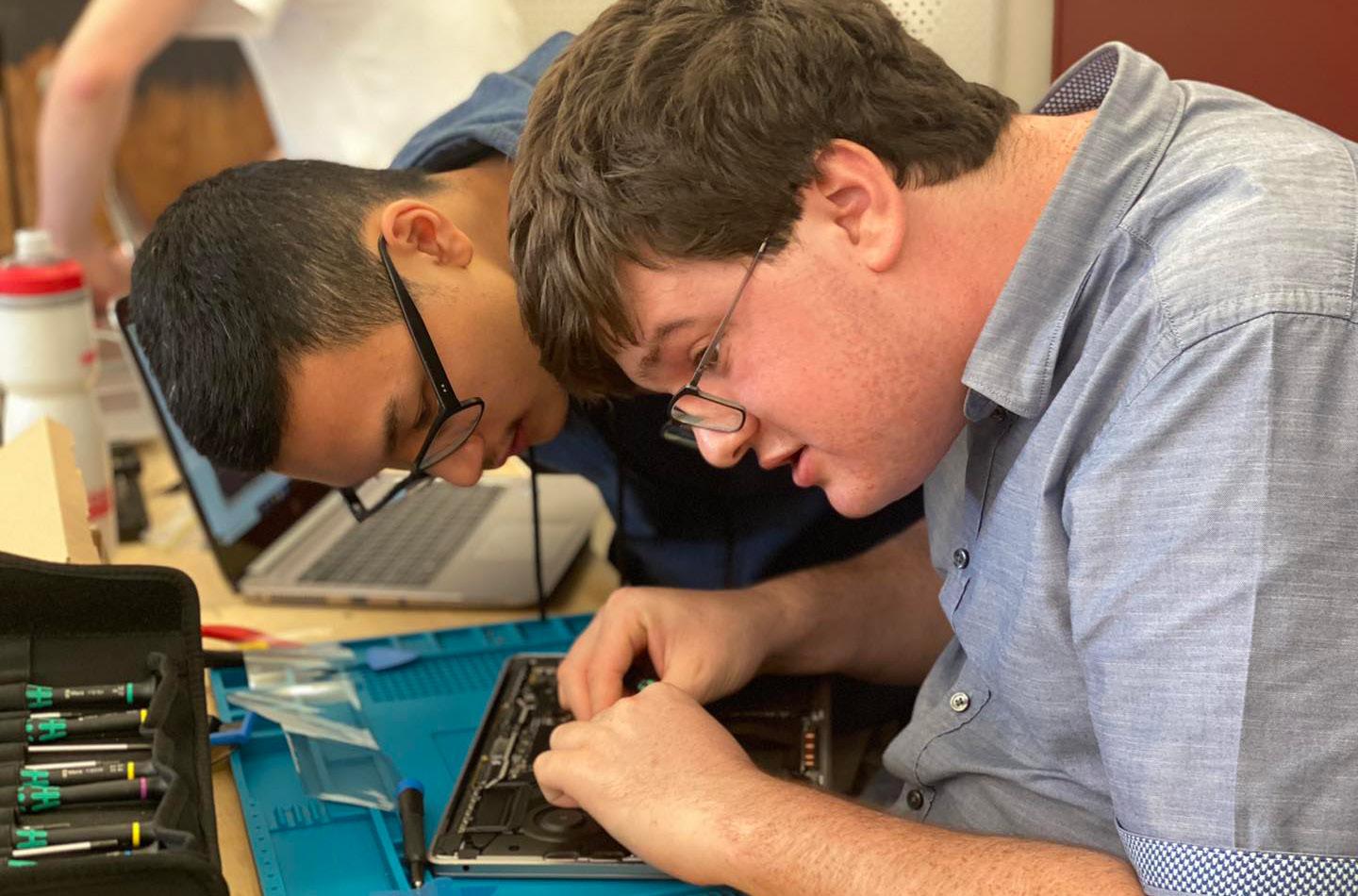
The Reconnect Project was born from a vision of stopping mobile devices from being downcycled prematurely as e-waste. National mobile device recycling scheme MobileMuster reported that there were 23 million unused mobile phones sitting in drawers, cupboards and garages. When faced with end-of-use decisions for mobile phones, consumers could choose between handing the phone to family or friends, sending to MobileMuster for destruction and materials recovery, or use a trade-in or buy-back service to regain some of the device’s value.
Website: thereconnectproject.com.au

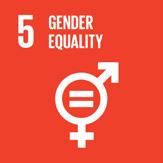

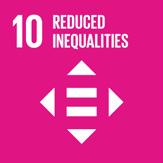

23
CIRCULAR ECONOMY AWARD
WINNER 2023
Born from a vision of stopping mobile devices from being downcycled prematurely as e-waste

Consumers were increasingly reliant on their devices for internet or appbased activities. The higher initial purchase cost for a mobile phone was leading to longer device ownership, with consumers turning over their phones every 40 months (up from average of 30 months in 2017). As a result, the independent mobile device repair industry was rapidly growing as consumers sought costeffective services to maintain their personal devices. For individuals wanting to work in or establish their own small business providing mobile device repairs, there was nowhere to gain hands-on skills or be trained under a formally recognised training program.
The Reconnect Project put these two concepts together: giving people an alternative to e-waste for their mobile devices and providing training and skills to individuals in mobile device repair. The output would be refurbished devices distributed to people in disadvantaged situations.
Launched in September 2019 at a Pitch for Good event supported by StartSomeGood and the City of Parramatta, The Reconnect Project began as a crowdfunding campaign with the tagline “Giving old phones and devices a new life” and raised $5,425. In February 2020, The Reconnect Project commenced operation in a small, shared space, with the aim to provide retail repair services for generating revenue required to purchase spare parts for repairing donated mobile phones. Their first customer was none other than Costa Georgiadis. Then Covid-19 hit Australia and the shared workspace closed. Word spread amongst the social service network of Sydney’s south and by May, The Reconnect Project had received requests for 400 mobile devices so that caseworkers could maintain contact with their most vulnerable clients during lockdown. Throughout 2020, The Reconnect Project survived with grant funding from City of Sydney and City of Parramatta.
In December 2020, The Reconnect Project took out a lease on a small retail shopfront in Penshurst. Australia’s first charity-run mobile device retail repair shop opened to the public in February 2021.
Thanks to The Reconnect Project, 2,026 individuals now have the technology to maintain contact with family, engage in online education, connect with friends and undertake essential activities such as online banking and video call health appointments. The Reconnect Project now employs 5 permanent staff and is developing Australia’s first accredited mobile device repair training program, specially designed for neurodivergent young adults who seek a career in repairs.
2023 24 NSW SUSTAINABILITY SUCCESS STORIES
Southern Sydney Regional Organisation of Councils (SSROC)
SSROC’s Procure Recycled: Paving the Way initiative for 15 participating councils is closing the loop by using recycled crushed glass and end-of-life tyres in Sydney-area roadmaking.

A new program involving 12 Sydney councils, is expected to achieve significant environmental and economic benefits through recycling tyre rubber to create new roads.
Website: ssroc.nsw.gov.au/

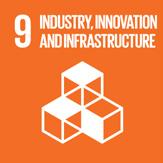



16 councils in greater Sydney: Bayside Council, Burwood Council, Canada Bay Council, CanterburyBankstown Council, City of Sydney, Hornsby Council, Georges River Council, Inner West Council, Lane Cove Council, Northern Beaches Council, Randwick Council, Ryde Council, Sutherland Council, Waverley Council, Willoughby Council, Woollahra Council, NSW Environment Protection Agency (EPA), Institute of Public Works and Engineering Australasia (IPWEA), NSW Department of Planning and Environment (DPE), Tyre Stewardship Australia (TSA), Australian Flexible Pavement Association (AFPA), RMIT University, National Building Specification (NATSPEC), Transport for NSW (TfNSW)

25
CIRCULAR ECONOMY AWARD
Sydney councils driving nation’s largest recycled rubber road project
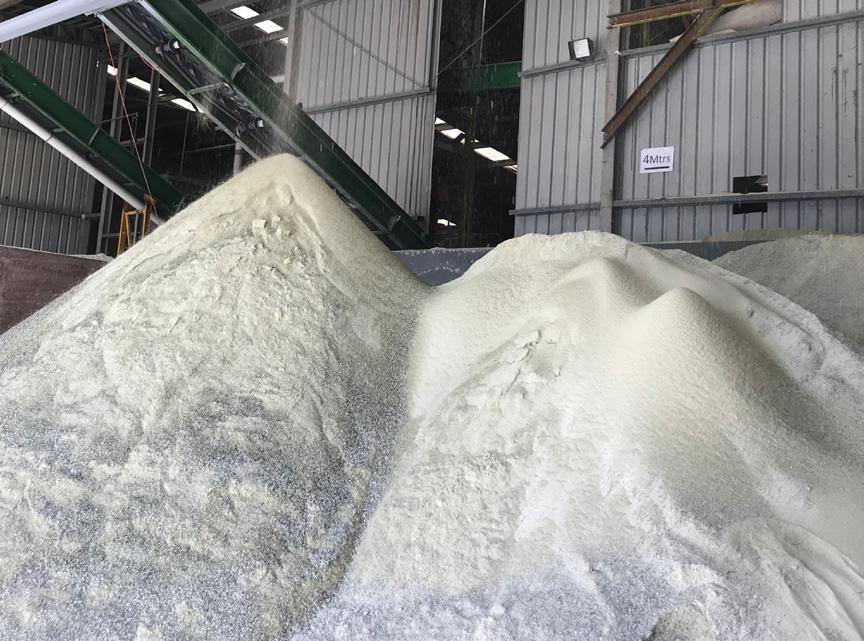
The project involves using recycled rubber from end-of-life car and truck tyres processed in Sydney to modify the polymers in bitumen. While recycled rubber has been used in roads globally for decades, this demonstration project aims to further improve the sustainability of council roads, reduce net capital and operating expenditures by extending road life, and create a local market for end-of-life car and truck tyres in bitumen.
Organised by Southern Sydney Regional Organisation of Councils (SSROC) and supported by Tyre Stewardship Australia (TSA), the Reusing Rubber: Recycling Tyres for Roads project involves the following councils: Bayside, Burwood, Canada Bay, Canterbury-Bankstown, City of Sydney, Georges River, Inner West, Randwick, Sutherland, Waverley and Woollahra and Northern Beaches with technical support from the Australian Flexible Pavement Association (AfPA).
SSROC President and Mayor of Burwood, Councillor John Faker said the project will demonstrate the benefits of repurposing waste to help drive further initiatives.
The initial focus of the Sustainable Pavements contract was to incorporate Recycled Crushed Glass (RCG) in roads as a substitute for natural sand, which stimulated regional infrastructural investment and created a local market for the equivalent of about 38 million glass bottles per year. SSROC was integral in the building of local government specifications for use of RCG.

In partnership with TSA, the program will initially use about 3,600 equivalent standard passenger car tyres, or 2,400 car and 490 truck tyres. All tyre-derived materials used in the project comply with the NSW Environment Protection Authority (EPA) recovered tyres order and exemption 2014 to ensure they meet regulatory requirements.
TSA Chief Executive Officer, Lina Goodman, said as 85% of Australia’s roads are managed by local councils, the SSROC project demonstrates the value of local governments driving circular economy outcomes by using tyre-derived material across roads and civil infrastructure projects.
AfPA has brought its specialist expertise to the partnership and developed the project’s innovative technical framework.
AfPA Executive Director Technology and Leadership, Anna D’Angelo, said: “A recycled rubber asphalt project of this scale is an Australian first. This project will enable the generation of comprehensive data on several innovative reused rubber-based treatments for local roads.”
SSROC also worked closely with Transport for NSW through a knowledge-sharing memorandum of understanding to advance their common objectives of improving asset sustainability through decarbonisation and material efficiency.
RMIT Associate Professor Filippo Giustozzi, said recent research by RMIT University has shown that rubber acts as a sunscreen, which increases durability and slows the ageing process of roads.
He said “According to recent research, recycling of end-of-life tyres to recycle in new roads can save up to 72% of CO2 equivalent emissions compared to landfill.”
“Roads are the largest assets for local governments and one of our best opportunities to move towards a circular economy.”
26 NSW SUSTAINABILITY SUCCESS STORIES 2023
Climate Technology Impact Award
27

SIMPaCT: Smart Irrigation Management for Parks and Cool Towns
The SIMPaCT (Smart Irrigation Management for Parks and Cool Towns) project is the first fully autonomous city cooling system that turns green spaces into effective urban air conditioning units.

Western Sydney University, Sydney Olympic Park Authority, Sydney Water, University of Technology Sydney, Monash University, Eratos, Hydraulic and Risk Consulting, The ARCS Group, SAPHI, Centratech Systems, Total Water
Website: simpact-australia.com/





The SIMPaCT project developed an autonomous irrigation system that improves climate change resilience of urban communities. The unique capability of SIMPaCT is its ability to manage park irrigation specifically for cooling of air and surface temperatures during hot summer days.

29
CLIMATE TECHNOLOGY IMPACT AWARD
WINNER 2023


Machine learning algorithms and a digital twin are used to estimate accurate irrigation schedules that maintain optimum health of vegetation and improve water use efficiency at any day of the year.
The absorption of solar radiation, storage, and the subsequent emission of this energy as sensible heat leads to warming of air temperature across our cities, which in turn amplifies the risk of urban overheating and its associated negative impacts on public and ecosystem health, economic activities, services and infrastructure. Urban green infrastructure, like trees, gardens or parks, on the other hand help keeping cities cooler through shading of surfaces and evapotranspiration of water. As global warming leads to dryer and hotter summers, it is necessary to develop new strategies for urban cooling. Research has shown that well hydrated parks can lower peak daytime air temperatures by up to 4°C and this cool air can travel more than 1 km downwind. Thus, supercharging parks to generate maximum rates of cooling in summer increases human thermal comfort inside and around parks and lowers energy needs of nearby buildings.
SIMPaCT maximises cooling at Bicentennial Park in Sydney Olympic Park using sensors that measure soil moisture, ambient temperature and
humidity, wind speed and rainfall. LoRaWAN and 5G networks collect this real-time data which is ingested by a customised digital platform. The platform houses the digital twin of the park where geo-spatial models and machine learning algorithms continuously evaluate a large number of environmental scenarios to find the optimal irrigation solution for these
An autonomous irrigation system that improves climate change resilience of urban communities.
scenarios. By ‘learning’ over time under which environmental conditions irrigation commands resulted in the ideal soil moisture levels, water use across the park is optimised while maximum air cooling is provided. Using wireless sensors and generating water saving and cooling benefits makes SIMPaCT an ideal solution to effectively address climate change risks for cities. The system is deliberately constructed to easily up- or down-scale, allowing implementation of the SIMPaCT technology in a wide range of irrigation applications under different environmental conditions. The
operational and public-facing webbased dashboards, available at www. simpact-australia.com include datarich visualisations allowing users to see current, historical and forecast environmental data. Park managers can easily determine faults and leaks in the irrigation system and visitors can choose the perfect day, time and location for activities in the park.
The successful development and implementation of SIMPaCT was only possible due to exceptional collaborative efforts. Under the leadership of Western Sydney University, scientists from UTS and Monash University, in partnership with The ARCs Group, Eratos, Centratech, HARC, SAPHI, Total Water, Sydney Olympic Park Authority, the NSW Department of Planning and Environment and Sydney Water, focussed on improving environmental quality, public health, and climate change resilience.
30
NSW SUSTAINABILITY SUCCESS STORIES 2023
BGIS & Cresstec - REED HVAC-R Optimisation Technology
REED HVAC-R is a retrofittable, refrigerant management, energy saving, optimisation technology for commercial Heating Ventilation Airconditioning & Refrigerant (HVAC-R) equipment which utilises deterministic Artificial Intelligence designed to drastically reduce emissions.

Given the scale of the sites BGIS maintains for the Department of Defence, BGIS must continually innovate across all facets of their service delivery. There has been a large focus by the Department of Defence to identify and implement energy saving initiatives to support Defence’s aggressive 43% emission reduction target by 2030.
Website: cresstec.com/reed






31
CLIMATE TECHNOLOGY IMPACT AWARD
Given the scale of the sites BGIS maintains for the Department of Defence, BGIS must continually innovate across all facets of their service delivery. There has been a large focus by the Department of Defence to identify and implement energy saving initiatives to support Defence’s aggressive 43% emission reduction by 2030.
BGIS identified that there is a gap in adaptable energy saving solutions for mechanical Heating Ventilation Airconditioning & Refrigerant (HVAC-R) equipment/systems.
Furthermore, BGIS identified that HVAC systems on average consume 30-60% of the estates infrastructures’ energy consumption. This challenge statement led to a partnership between BGIS and Cresstec to finalise and implement the REED HVAC-R innovative product to establish a global first trial on a HVAC PAC Unit at the Australian Defence Force Establishment.
The REED HVAC-R is a, retrofittable, refrigerant management and energy saving technology for commercial HVAC & Refrigerant equipment that
utilises machine learning (Artificial Intelligence). REED works by opening the systems refrigerant circuit allowing for dynamic refrigerant optimisation to perfectly match the demand and environmental requirements. REED also harvests and stores refrigerant energy normally lost through system operation and uses this ENERGY to save electricity and reduce system wear.
Artificial-Intelligence REED HVACR’s novel design, fluid connectivity, precision sensor suite and machine learning, enables it to detect system refrigerant leaks, micro refrigerant leaks and intermittent micro refrigerant leaks that occur at pressure with an advanced level of accuracy only achievable through REED HAVC-R. This is a huge benefit given the impact refrigerant gases have on the environment as the refrigerant gas trap heat in the ozone, which is a large cause of temperature rises.
There are several key benefits achieved by the REED HVAC-R product inclusive of, but not limited to; customer satisfaction,
risk reduction, reputational enhancements, significant cost savings, capability compliance, environmental, and delivering outstanding user experience.
The results have been outstanding with a significant energy / cost savings achieved for Defence resulting from the trial on the individual HVAC Packaged-Air-Conditioning (PAC) Unit. The REED HVAC-R was able to ‘learn’ the machine through its machine learning capability and make crucial adjustments to the system, which has resulted in the significant savings achieved.
Given the success of the product, BGIS & Cresstec have commenced scaling out the product across the entire Defence Portfolio managed by BGIS. We achieved product recognition to allow for government energy schemes to be leveraged off, such as Carbon Credits and Energy Savings Scheme (ESC). This has resulted in further rapid expansion of the Artificial-Intelligence REED HVAC-R and has solidified it as the most superior product on the market for achieving HVAC system energy reductions for businesses.
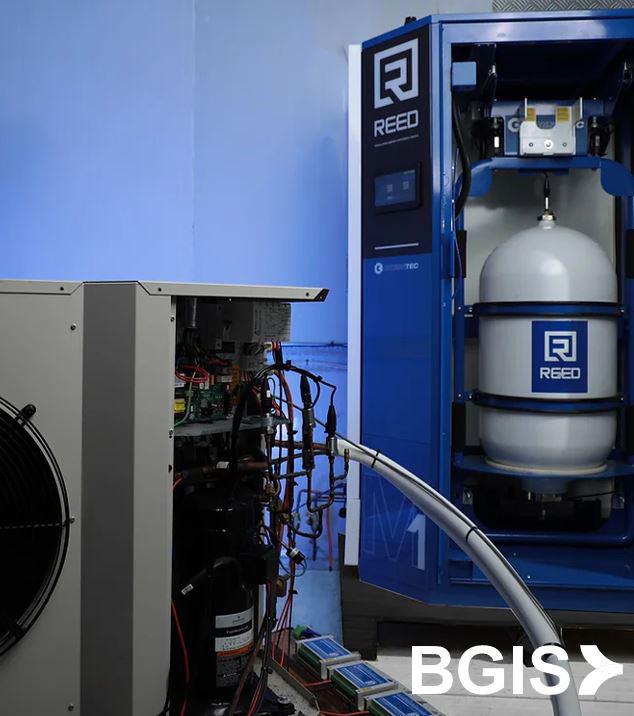
HVAC systems on average consume 30-60% of the estates infrastructures’ energy consumption

32 NSW SUSTAINABILITY SUCCESS STORIES 2023
Green Eco Technologies
Green Eco Technologies have diverted 1 ,556,198 kg of Food Waste from landfill in Australia alone!
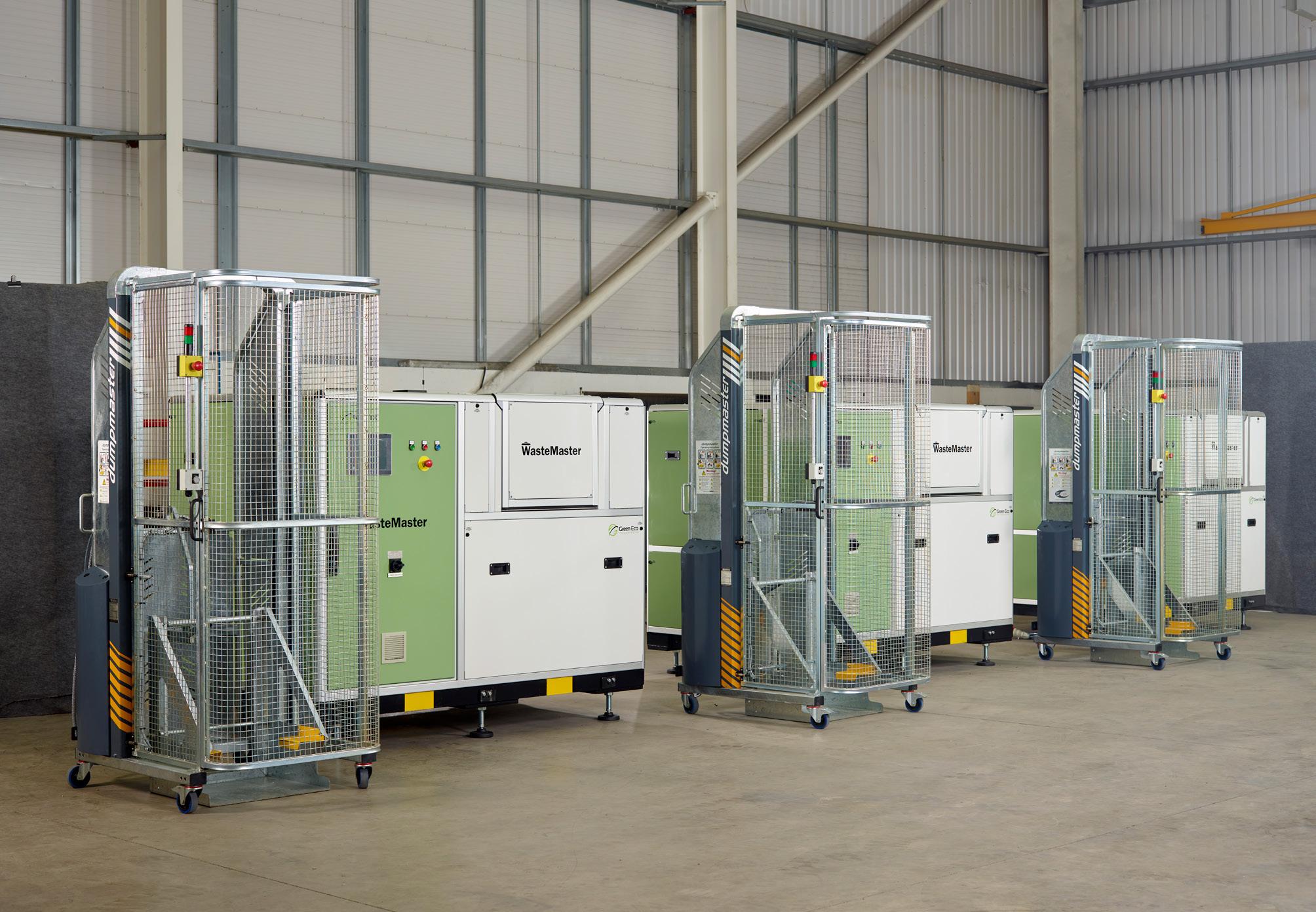
Using clean technology on-site to process food waste without wasting water or damaging rivers, the WasteMaster development contributes to SDG 13 for urgent climate action by lowering greenhouse gas emissions. In keeping with SDG 12's objectives, the WasteMaster also provides information to help users reduce their waste while maximising the value of unavoidable organic waste as a useful resource through recycling and repurposing.
Website: greenecotec.com/




33
CLIMATE TECHNOLOGY IMPACT AWARD
Decreasing the carbon footprint of food waste decomposing in landfills by about 84%
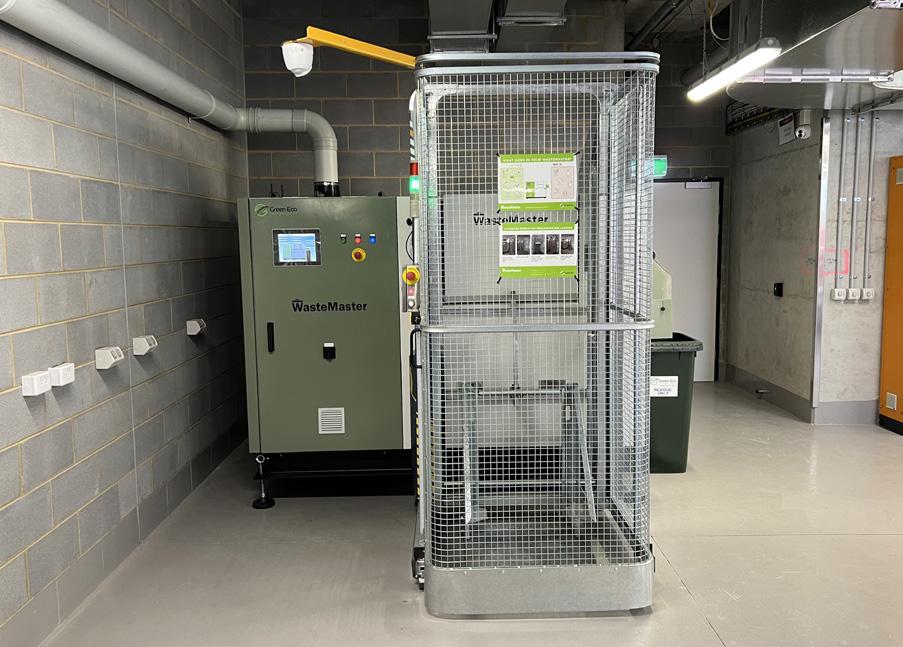
We have given users the ability to:
• report on their CO2 equivalent reductions from on-site waste processing thanks to the WasteMaster innovation.
• strengthen their environmental credentials, such as their NABERS green building ratings.
• raise health and safety standards at the location by minimising vehicle movements and getting rid of perishable food waste; to produce a residual material from the food waste which can be used for other resources.
According to a Life Cycle Analysis undertaken by Deakin University, the WasteMaster system decreases the carbon footprint of food waste decomposing in landfills by about 84% while reducing the customer operating costs associated with the disposal of food waste. The climate change challenge is made worse by food loss and waste because of the large greenhouse gas (GHG) emissions

it produces. Food is a substantial source of carbon dioxide (CO2) emissions throughout its production, handling, and transportation, and when it ends up in landfills, it releases methane, an even more potent greenhouse gas. Additionally, the method adds value in terms of both money and the environment by generating a residue that maintains 90% or more of the nutrients found in organic waste, allowing for tertiary uses like fertiliser, animal feed, aquafeed, the production of green electricity, soil improvement, etc. Overall testing to date has revealed that the WasteMaster retains approximately 90% of the important macronutrients (protein, fats & oils, and carbs) in waste materials. The findings demonstrate that the quality and quantity of proteins are not altered by processing, and that the distribution of nutrients in the leftover materials conforms to expectations and forecasts based on the type of food waste used as input. Amino acids, fatty acids, and phenolic compounds— sensitive components—are also being preserved.
For instance, the protein level of residues from poultry farms (Bargo and Peats Ridge, NSW) is 20–30%, while residues from a variety of mixed food wastes studied had a protein content of 15–25%. Approximately 30% of the fat in chicken residues and 14–30% of the fat in mixed food waste residues.
The WasteMaster is producing processed food waste residues that can be diverted from landfill for use in future applications including aquafeed, fertiliser, and fibre manufacturing, according to test results.
34
NSW SUSTAINABILITY SUCCESS STORIES 2023
Wattwatchers Digital Energy
Wattwatchers has created My Energy Marketplace (the ‘MEM’), a unique resource for securely and ethically sharing 5000 + electricity customer datasets to enable Australian research and innovation for the clean energy transition.

Founded with a vision to empower household and business electricity customers with real-time and historical/trend energy data, Sydneybased digital energy platform company Wattwatchers recognised a major gap in the availability of key customer datasets for clean energy transition research and innovation.
Website: wattwatchers.com.au






35
CLIMATE TECHNOLOGY IMPACT AWARD
"High quality residential energy data is extremely rare and valuable, leading to challenges”

In 2017, while still an early-stage technology startup, Wattwatchers started engaging potential supporters for a concept that began its life as a ‘people’s energy data bank’, and became a reality in mid-2023 as My Energy Marketplace (the ‘MEM’). Early engagement targets included the then Federal Department of Energy and the Environment, the CSIRO, the NSW Government, and the Australian Renewable Energy Agency (ARENA). In 2019 ARENA backed a nearly $9M MEM project, with up to $2.7 million in grant funding over three years, targeting the Australia-wide recruitment and installation of 5000+ households, small businesses, community facilities and schools to collect, store and share details of their electricity use. ARENA said at the time: ‘Wattwatchers aims to build, operate and deploy the ‘My Energy Marketplace’ or ‘MEM’, a consumer-facing energy data platform, designed to securely collect, process and productise vast amounts of energy data.’
The MEM project was launched in February 2020 at EnergyLab in Sydney, but immediately ran into Covid pandemic impacts that locked down communities, consumers and installers. Nonetheless, the MEM proceeded, with eight months in time extensions from ARENA, and ended successfully in June 2023 with 5100+ participating sites, about a third of them in NSW.
Core project partners were Sydneybased Accurassi, Brisbane-based Solar Schools, and the Canberrabased Battery Storage and Grid Integration Program (BSGIP) at the Australian National University (ANU). Early customers for the MEM datasets include UNSW, the ANU, the CSIRO, UTS ISF, the NSW Government, home electrification advocacy campaigns, and energy app and solution developers.
This August 2023 quote from former CSIRO energy researcher Tim Moore, now with the Australian National University (ANU), strongly
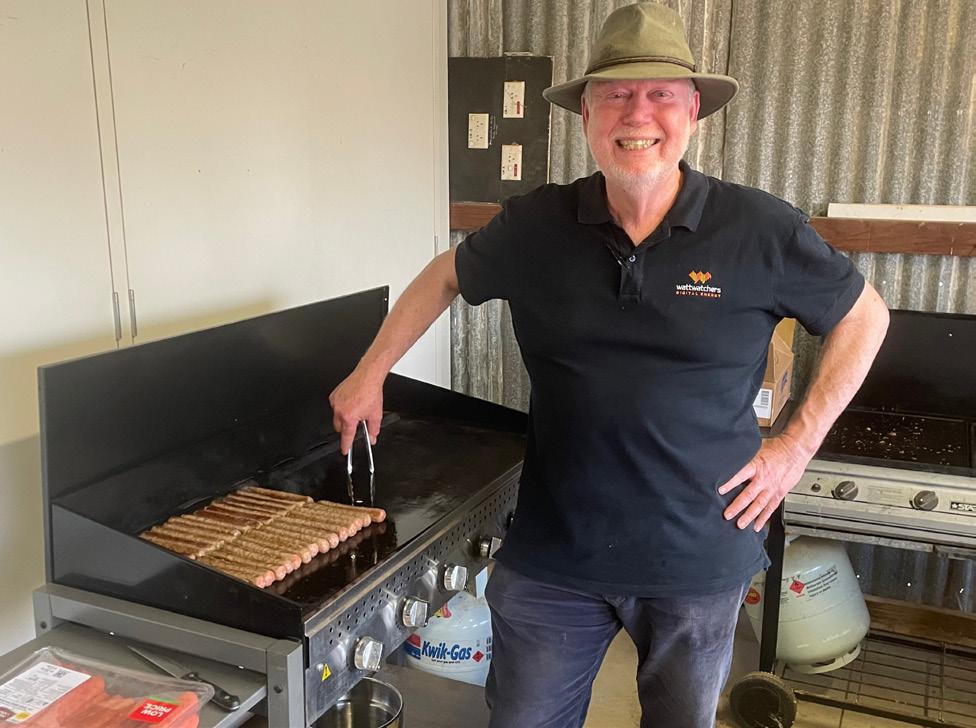
validates the original MEM concept, and demonstrates the impact of what Wattwatchers has created:
‘High quality residential energy data is extremely rare and valuable, leading to challenges in research data analysis. The Wattwatchers My Energy Marketplace dataset gave us quick access to dozens of endpoints monitoring hundreds of individual devices, allowing us to perform a far deeper analysis than we expected would be possible – greatly improving our research outcomes and the impact we were able to create. The data was easy to access and required very little pre-processing, saving time and allowing us to get straight into the research with almost no overhead. We’re already planning our next data project using this great resource!’
Wattwatchers is now a mature technology scaleup business, with strong expansion in Australia and internationally, having raised nearly $10 million in growth capital from impact investors including Kilara Capital and the Clean Energy Finance Corporation (CEFC). Thanks to the MEM datasets, energy data as a service is now part of Wattwatchers’ core business model, alongside hardware sales (over 75,000 devices have gone into the field) and software/communications subscriptions.
36
NSW SUSTAINABILITY SUCCESS STORIES 2023
Communication For Impact Award
Banksia NFP & NGO Award 37

Action4Agriculture
The Young Environmental Champions program partners with the Sustainable Development Goals to support young people to investigate the world, recognise perspectives, communicate their ideas, and take action.

Office for Regional Youth, Hunter Local Land Services, Vincent Fairfax Family Foundation
The challenge of preparing our youth for the future is greater than preparing them for work. Pressing issues such as protecting the environment, managing unprecedented human migration, and addressing the challenges of poverty, global health, and human rights will demand a generation of individuals with a strong capacity to work together to solve global problems.
Website: actionforagriculture.com.au/

















COMMUNICATION FOR IMPACT AWARD
NSW
WINNER 2023

At Action4Agriculture we believe young people are the most powerful communicators of sustainability messages and these young people can then influence friends, family, and community.
We empower students in primary and secondary schools to be these communicators through the Young Environmental Champions program, which introduces them to the United Nations Sustainable Development Goals (SDGs) and tasks them with creating an action plan on an issue that is important to them.
Over a 10-week period the pilot of Young Environmental Champions took students from ten schools in the Hunter and Hawkesbury regions on an action learning sustainability journey.
They were supported by a broad range of regionally based experts, including young role models from the agricultural sector, known as Young Farming Champions (YFC). This ensured the program was youth led, co-designed and actively incorporated the voices of young people from design to delivery as well as act as workshop co-hosts.
Students attended in-person and online workshops, learning about the SDGs, team building, project management, design and systems thinking and community action planning. We gave them a leadership
Through YEC our young people are reshaping, rewiring and reimagining the future

coach and mentors. We connected them with community projects, government agencies, volunteers and individuals who shared their visions and supported bringing their big ideas to fruition.
To complete the YEC journey students came together for a celebration event where they pitched their community action plans to a panel of judges and explained how the SDGs guided and informed their projects.
We were amazed at the results. Students found a diversity of projects to focus on including sustainable fishing, waste management and recycling, increasing pollinators, improving student mental health, technology to transition students to high school, community partnerships and climate action.
At Hamilton Public School students focused on SDGs 3 (Good Health and Wellbeing) and 13 (Climate Action) to create a project titled People Power. “[We are] aspiring to improve the health of individuals and our community. We aim to clean the air and promote physical health by promoting modes of transport that are strictly people powered!” Hamilton Public School was the worthy winner of the YEC primary section.
Winning the secondary section were students from St Joseph’s Lochinvar who looked at flood mitigation due to local urbanisation and how it would affect their school, coming up with a solution that utilised the excess water through irrigation. Their project incorporated SDGs 9 (Industry, Innovation and Infrastructure) and 15 (Life on Land) and was an excellent example of how global issues can be addressed at a local level.
Through YEC our young people are reshaping, rewiring and reimagining the future. They are learning 21st century skills to become creative and critical thinkers, confident communicators, and collaborators. They are becoming tomorrow’s leaders today and they will be the employees every applicant for a Banksia Award will want on their team.
The YEC has proven so successful it will be replicated and scaled in 2024 creating a new generation of global citizens who can investigate the world beyond their immediate environment, recognise different perspectives, others’ and their own, communicate ideas effectively with diverse audiences, and take action to improve conditions.
40
NSW SUSTAINABILITY SUCCESS STORIES 2023
Return and Earn NSW Container Deposit Scheme
Return and Earn is a much loved and trusted NSW recycling initiative, contributing to a growing circular economy.

Exchange for Change, TOMRA Cleanaway, NSW Environment Protection Authority
Return and Earn is the NSW container deposit scheme. It rewards recycling by paying 10c for each eligible drink container returned through its 620 return points across NSW.
Website: returnandearn.org.au/








41
COMMUNICATION FOR IMPACT AWARD


The scheme launched in December 2017 as a litter reduction initiative to address the high levels of beverage container litter found in NSW at the time. Nearly six years on, Return and Earn is a trusted recycling initiative with strong community support and participation, and measurable social, economic and environmental outcomes.
Eighty-one per cent of NSW adults have participated, returning 9.9 billion drink containers for recycling
and collecting $990 million in container refunds. Return and Earn has contributed to a 54 per cent reduction in drink container litter since pre-scheme levels with 2 out of every 3 containers supplied in NSW now returned through the scheme. Over 885,700 tonnes of materials have been recycled.
The scheme is funded by the beverage industry and delivered in partnership between NSW Government, scheme coordinator Exchange for Change, and network operator TOMRA Cleanaway.
Communication and marketing activities are based on the latest consumer research and best practice behaviour change principles. In 2021-22, a refreshed Return and Earn marketing program aimed to increase redemptions of eligible drink containers by increasing participation and making it habitual after research found that the previous campaign could be clearer on why people should participate.
The refreshed marketing campaign highlights the two main motivators for participation as identified by the research – financial and environmental – and is centered around the tagline ‘a small act can have a big impact’.
The new marketing approach has been very effective. As of June 2023, the Return and Earn marketing campaign has successfully created widespread awareness of the scheme, garnered support and trust from the public, and resulted in high levels of habitual participation. This indicates that most adults in New South Wales have made a sustained behaviour change in less than six years.
The impact of these effective communication activities to drive participation has meant less litter because people redeem containers they consume and find lying around while the high-quality clean stream of material being collected through the return points is contributing to a growing domestic circular economy. All glass and plastic bottles collected through return points are recycled in Australia.
Over 885,700 tonnes of materials have been recycled
The scheme is an inspiring example of how research-led communication and marketing strategies can galvanise a community to not only be supportive, but also to change their behaviour to achieve significant social, environmental and economic outcomes, all in a short period of time.
42
NSW SUSTAINABILITY SUCCESS STORIES 2023
Large Business Sustainable Leadership Award
43

Port of Newcastle
Port of Newcastle is diversifying for the future

Port of Newcastle has consistently demonstrated sustainable leadership within its sector by commitment to an Environmental, Social, Governance (ESG) strategy and master plan that underpin their sustainability journey. Their commitment to sustainability is strengthened through support of the sustainable development goals (SDGs) with the identification of priority, underlying and supporting SDGs.
Website: portofnewcastle.com.au/















LARGE BUSINESS SUSTAINABLE LEADERSHIP AWARD
Conceptual Image Port of Newcastle Clean Energy Precinct Stage 1
WINNER 2023
We were the first Australian port to be certified as environmentally sustainable by Lloyds through the International EcoPorts Network which ensures we provide robust governance around our environmental management. We have achieved 5-star ratings in GRESB ESG benchmarking for the past three years, increasing from a score of 45 in 2019 to a score of 95 in 2022.
Sustainability is embedded into our organisation through our sustainable finance framework which sets out key performance indicators aimed at improving ESG issues. Linking staff short term incentive payments to these sustainable finance KPIs ensures that accountability is instilled across the organisation.
Port of Newcastle has invested time in understanding our emissions profile to enable us to identify opportunities for improvement and demonstrate performance. Aligned with our commitment to the Paris Agreement 2016, we have undertaken a series of strategic decarbonisation initiatives across the business. In 2022, we were approved for a Science Based Target Initiative 1.5-degree scenario Scope 1 and 2 emissions reduction. This will result in an emissions reduction of 55% by 2030 from a 2018 baseline. We also completed the measurement of our Scope 3 baseline emissions (2018) and are publicly committed to reducing these emissions each year in line with the SBTi trajectory.
Port of Newcastle has set a net zero 2040 target supported by a net zero business plan which was approved by the Board in 2022. Considerable emissions reductions have been realised by entering into a renewable purchase power agreement within our three embedded networks. Furthermore, we have ensured all other purchased electricity was renewably sourced by purchasing and surrendering large-scale generation certificates for all smaller sites outside of the embedded network. This resulted in a reduction of all Scope 2 emissions in 2022 and has also reduced Scope 3 emissions through our downstream leased tenants electricity usage. We have

also improved our energy efficiency through a port-wide LED lighting upgrade which was completed in 2023.
Port of Newcastle’s clean energy precinct is a landmark precinct project enabling a new, scalable economy, positioning the Hunter Region as a global, diversified clean energy gateway and a catalyst for economic growth, job opportunities and innovative career pathways. This project addresses four priority SDGS: SDG 7 (Affordable and Clean Energy), SDG 8 (Decent work and economic growth), SDG 9 (Industry, innovation and infrastructure) and SDG 13 (Climate Action). Embodying our commitment to shared progress and SDG 17 (Partnerships for the goals), we continue to form collaborative partnerships with our tenants and wider port community to foster innovative energy efficiency initiatives
and provide leadership within this space. This united effort is vital for realising energy transformation and decarbonisation goals across the Hunter region.
In summary, Port of Newcastle’s dedication to sustainable leadership is across every aspect of our organisation. Through strategic governance, innovative initiatives, collaborative partnerships and our commitment to the sustainable development goals, we have forged a path toward a more sustainable future that resonates within our organisation and in the broader community we serve.
NSW SUSTAINABILITY SUCCESS STORIES 2023
46
Opal Healthcare
Opal HealthCare is transforming aged care for a better future for all.

A key pillar of Opal HealthCare’s sustainability program is ‘Caring for our People’. As Australia’s ageing population grows so does the need for capable, competent and well-trained aged care workers to deliver quality care. The Opal HealthCare Academy was created to support high-quality care for older people and sustainable careers in aged care.
Website: opalhealthcare.com.au/










47 LARGE BUSINESS SUSTAINABLE LEADERSHIP AWARD
The Academy brings Opal HealthCare’s extensive suite of training and development programs together under one umbrella and supports career pathways across every aspect of residential aged care. It is how Opal provides sustainable career pathways for its team and delivers quality care for residents now and into the future.
It is comprised of six schools of education:
• Nursing and Health Services
• Hospitality
• Meaningful Life
• Business Services
• Leadership
• Research
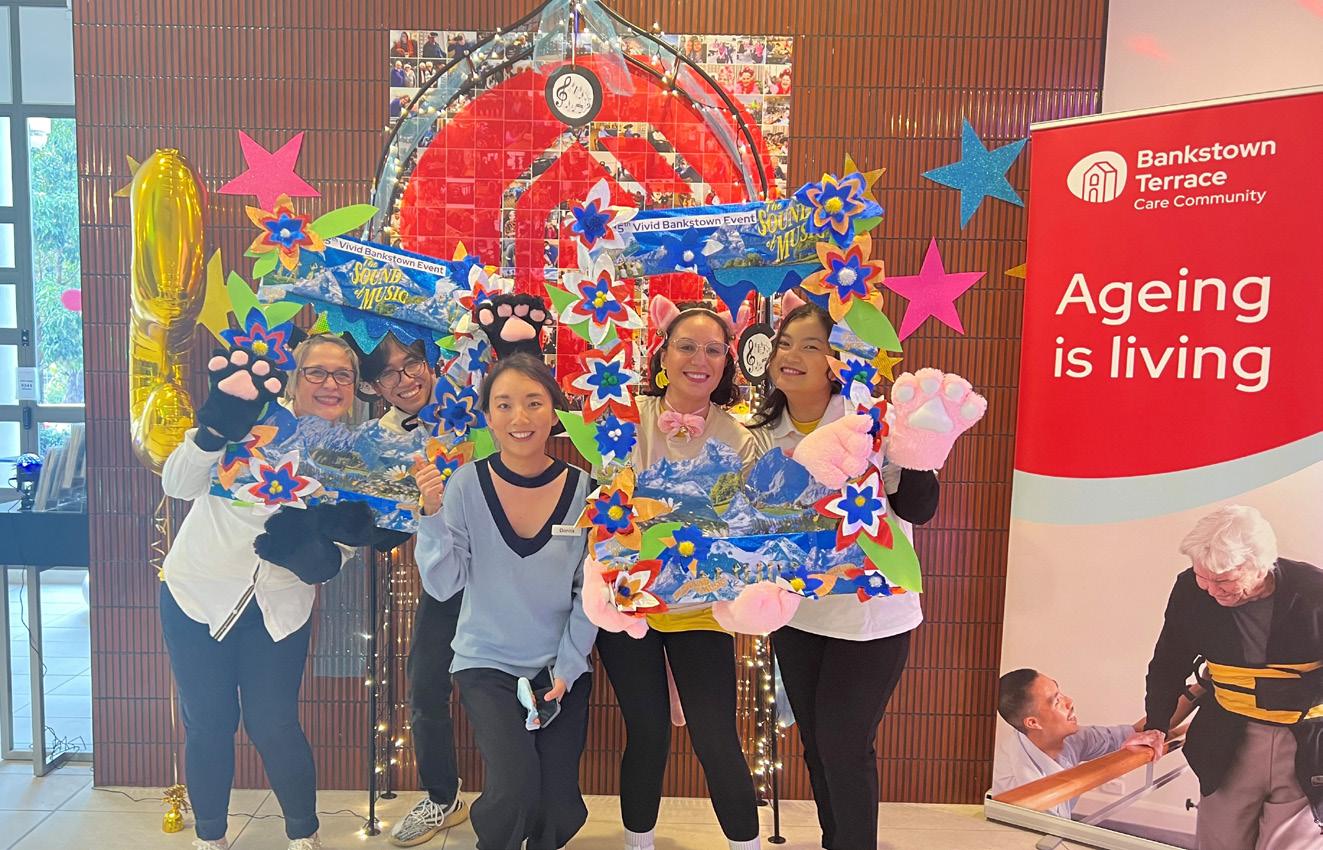
- Alexandra, Care Community general manager, developed processes and tools to support a less experienced general manager successfully transition into the role of managing a larger Care Community in NSW.
Signature training and development opportunities:
The Nurse Graduate Program supports the transition from student to practitioner. It focuses on building confidence and increasing participants’ scope of practice through guided mentorships in a supportive environment. Delivered in-house and in partnership with the University of Wollongong, it includes a range of evidencebased clinical and health services modules that can be used for other resources.
Opal’s bespoke Leadership Programs provide opportunities for team members to challenge themselves to take the next step in their leadership journey. Participants collaborate and apply authentic leadership principles in their day-to-day roles and in innovation projects including:
- Pritpal, Care Community general manager, developed a new community engagement space, ‘the Coffee Club,’ for residents, families and team at Mona Vale View Care Community in Sydney.
“The Senior Leadership Program was a great opportunity to reflect on who I am as leader, how I want to be seen as a leader and who I want to become as a leader. Sharing ideas and points of view with other leaders at Opal HealthCare was also very beneficial to build relationships, challenge the status quo and discover other or better ways of providing excellent care.” - Alexandra, Care Community general manager
Introduced in 2022, the bespoke Care Support Officer Program provides a practical pathway into a career in aged care. The program started at Tweed River Care Community and is now thriving in 29 Care Communities in NSW. It offers job seekers interested in aged care the opportunity to learn key skills through a four-week structured in-place learning program. On completion, participants can enrol in a traineeship with Opal HealthCare to achieve a Certificate III accreditation in Individual Support.
“I love working in aged care and now, through the Care Support Officer Program, I’m so confident and excited to be doing my Certificate III in aged care so I can become an Assistant in Nursing.” - Saminda, CSO Program graduate
Impact:
• Increases team members’ skills and knowledge
• Prepares team members for higher responsibilities
• Provides career pathways for entry level team
• Improves team culture, engagement and proficiency
• Creates new pathways into aged care for job seekers
Outcomes in NSW:
• 389 team members participated in an Opal HealthCare Academy program
• 245 team members awarded an Opal HealthCare Scholarship to support their studies
• >550 team members have accessed learning programs through the Academy (not including mandatory training)
• 50% of Academy program participants have been promoted

NSW SUSTAINABILITY SUCCESS STORIES 2023
48
Net Zero Action Award
49
The Pimpama River Conservation Area is located on the southern bank of the Pimpama River and borders the Southern Moreton Bay Marine Park and a Ramsar listed wetland.
49

Rheem Australia Pty Ltd
Rheem Australia Pty Ltd is committed to making a difference with the products we create, for the people we serve and through the processes that drive us.

Rheem has been a global leader in heating, cooling and water heating innovation. We continue to lead with our bold approach to improvements for our products and processes to
Website: rheem.com.au/rheem/





dramatically cut our impact on the environment, while empowering both our customers and employees to work and live sustainably. It is all a part of our bold vision for the future and equally bold commitment.
51
NET ZERO ACTION AWARD
WINNER 2023

Rheem recognises our opportunity and responsibility as a major global heating, cooling, and water heating product manufacturer and brand leader to care for the impact we have on the planet and be a role model helping to set a high standard for other companies in our industry and beyond. In 2017, we set out to design and establish a robust sustainability program and ambitious goals for achievement by our 100th anniversary as a business in 2025. Our aims, which align to and reinforce several of the 17 United Nations Sustainable Development Goals, are to improve the environmental footprint of our products which are in daily use in homes and businesses across the world (SDG 7), to be more mindful of our global impact and be better stewards of the global communities in which we operate (SDG 12), and to leverage our platform to empower the global skilled trade and our channel partners on sustainability (SDG 4).
Rheem announced our A Greater Degree of Good™ sustainability program and 2025 goals in January 2019. Our goals are, by 2025, to launch a line of heating, cooling and water heating products that boast a 50% reduction in greenhouse gas footprint; reduce greenhouse gas emissions in our manufacturing operations by 50%; achieve Zero Waste to Landfill in our manufacturing operations; and train 250,000 plumbers, contractors and key
influencers on sustainable products or sustainable installation and recycling best practices. To activate our global business around these objectives, we established a core team of sustainability experts at the Enterprise level and a companywide governance and employee engagement structure called GoodWorks, which assigns specific execution responsibilities to employees at our global locations, empowers employees at every level to play a role in our sustainability success, and ensures engagement, alignment, and accountability.
Rheem and its employees have driven the implementation of a range of initiatives to reduce water usage, lessen energy consumption and limit waste requiring disposal. Working with government and community
authorities to establish appropriate energy efficiency and performance benchmarks for the markets in which they operate, and demonstrate a commitment to protecting the local environments in which they operate.
Empowering employees at every level to play a role in our sustainability success, and ensures engagement, alignment, and accountability

52 NSW SUSTAINABILITY SUCCESS STORIES 2023
Orica
Every day, all around the world, Orica helps sustainably mobilise the earth’s resources.

Orica’s purpose is to sustainably mobilise the earth’s resources, guided by our Sustainability Strategy. Orica is vigorously implementing our climate change strategy supported by strong Board and executive governance, embedding into business strategy and clear and evidence-based
decarbonisation pathways. A key pillar of our decarbonisation strategy is deploying cutting-edge tertiary catalyst abatement technology to reduce nitrous oxide (N2O) emissions, a greenhouse gas (GHG) 265 times more potent than carbon dioxide (CO2) and a by-product of producing nitric acid for explosives.
Website: orica.com/




53
NET ZERO ACTION AWARD

Tertiary catalyst N2O abatement has been successfully deployed at Orica’s Carseland facility in Canada and Kooragang Island facility in New South Wales (NSW) in an Australianfirst. The transformational $37 million KI Decarbonisation Project is a public-private partnership with the NSW Government and the Clean Energy Finance Corporation and has eliminated the GHG emissions generated by Orica’s three nitric acid plants by at least 98 per cent. This is equivalent to 48 per cent of the site's total GHG emissions, 11 per cent of all chemical industry process emissions across Australia.
Orica has also signed a 10year renewable power purchase agreement (PPA) with the Wellington North Solar Farm near Dubbo to supply 100 per cent of Orica’s electricity needs in NSW. The solar farm extension will be operational in 2025 and forecasted to reduce Orica’s Australian Scope 2 emissions by approximately 50 per cent, corresponding to 65,000 tCO2-e per annum.
Orica’s ammonia plant represents a challenge in decarbonisation as the ‘hard-to-abate’ chemicals plant does not have many proven technologies to reduce Scope 1 emissions. Renewable hydrogen has emerged as a potentially significant enabler of Australia’s transition to a lower-carbon
The HVHH’s renewable hydrogen will displace natural gas in the production of ammonia and ammonium nitrate
economy and would enable Orica to be a hydrogen carrier through the manufacture of ammonia.
Orica is working with Origin Energy on the Hunter Valley Hydrogen Hub (HVHH) to deliver a commercialscale renewable hydrogen supply chain in the Newcastle industrial and port zone. The HVHH’s renewable hydrogen will displace natural gas in the production of ammonia and ammonium nitrate – supplying 85 per cent of mines in the Hunter region and crucial products for many businesses across NSW including agriculture, health, and food industries.
Furthering on decarbonisation with the HVHH, Orica’s long-term joint venture with Mineral Carbonation International (MCi), focused on commercialising Carbon Capture, Utilisation and Storage (CCUS) technology, will further reduce Scope 1 emissions. CCUS plays an important role where abatement technology is not available or economically viable. With support of an Australian Government grant, a CCUS demonstration plant is being built by MCi at Orica’s Kooragang Island site. It is scheduled to be operational in 2024 and forecast to have the capability to capture 3,000 tCO2-e per annum generated from our ammonia plant.

Elimination of at least 98% of the GHG emissions generated by Orica’s three nitric acid plants
54 NSW SUSTAINABILITY SUCCESS STORIES 2023
Penguin Random House ANZ
Penguin Random House is shaking up the publishing industry, driving carbon neutrality and sustainable book production.

As leaders of the Australian publishing industry, Penguin Random House (PRH) have set ambitious targets to be carbon neutral by 2030, decreasing emissions by a minimum of 50% on a 2018 baseline, and investing in quality carbon capture projects to offset all remaining hard-toreduce emissions. Climate Neutral 2030 is their plan to embed sustainability into the business and to lower their environmental footprint. They have established key focus areas that will help to achieve their objective and have developed a comprehensive action plan.
Website: penguin.com.au/






55
NET ZERO ACTION AWARD
United Book Distributors

PRH have seen changes across a large variety of categories, including the focus areas: packaging, waste management, distribution, book design and production, and staff engagement. Climate Neutral 2030 directly works towards UN SDGs 3, 4, 5, 8, 12 and 13.
So far, PRH have reduced their emissions by an incredible 52% from 2018. Increasing local production, utilising sea freight instead of air freight, and creating more spacesaving packaging has reduced their footprint by over 22,000 tonnes of CO2e in just 2 years. Other reductions in emissions directly related to staff actions include a 74% reduction in waste and recycling emissions, 76% reduction in business travel and 29% reduction in staff commuting. PRH’s volunteer staff Green Team organise and run events to encourage environmentally friendly actions both at work and home, including participating in clean up events and tree planting days. Keeping staff engaged and sharing news on the company’s progress towards carbon neutrality has created an exceptionally passionate team that look to make small changes to
their day-to-day work to improve environmental sustainability.
This is evident in the changes made to book design and production, after conducting internal education on the environmental impacts of book design materials and processes. Advanced reader copies no longer use lamination to reduce materials and increase recyclability. Book box sets are packaged in cardboard instead of shrink wrap. Glitter and flocking are no longer used, and each book is assessed whether it needs extra materials and embellishments. All books are printed on Forest Stewardship Council (FSC) (or equivalent) certified paper, as the highest standard of sustainable paper.
Climate Neutral 2030 required expertise from across the business, as well as several vital third-party stakeholders. Siecap measured and analysed all emissions from 2018, 2021 and 2022, and have been integral in establishing a data driven base of which PRH could establish actions on. The Australian Packaging Covenant Organisation (APCO) helped to guide sustainable packaging production and best
practices, helping PRH to achieve two of the APCO National Packaging Targets two years early. As a result, PRH’s packaging is made of at least 51% recycled content and over 80% of plastic packaging is recyclable.
PRH’s Climate Neutral 2030 is the first of its kind in the Australian publishing industry and is specifically designed for their products and the Australian market. As a member of the Australian Publishing Association’s Sustainability Working Group, PRH collaborates and shares its findings with others in the industry in hopes to inspire lasting change and a shared responsibility towards a better future.
Penguin Random House’s Climate Neutral 2030 is the first of its kind in the Australian publishing industry
56 NSW SUSTAINABILITY SUCCESS STORIES 2023
Placemaking Award
57
Banksia NFP & NGO Award
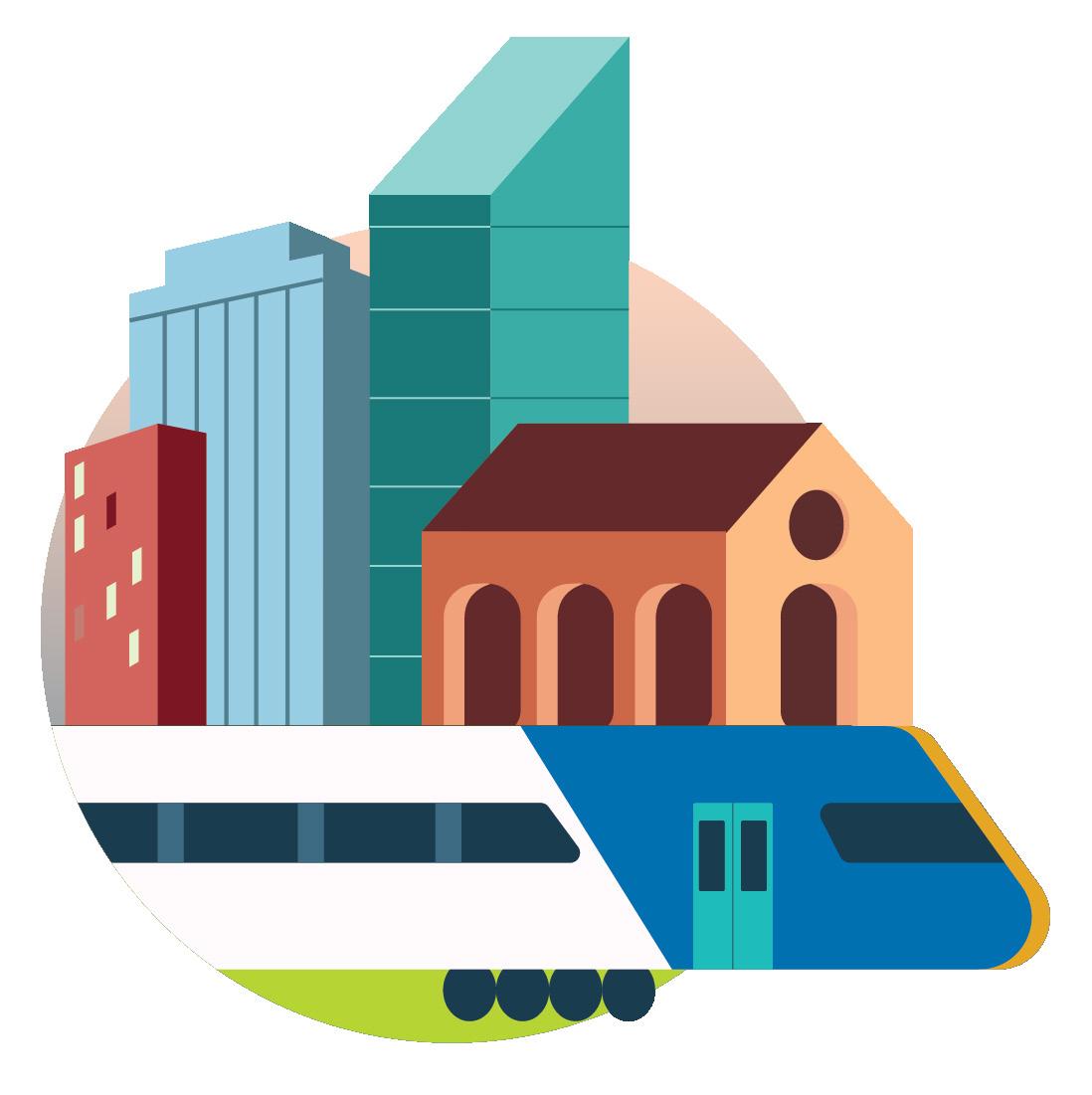
Parramatta Light Rail Stage 1, Transport for NSW
Transport for NSW is delivering integrated, customer-focused and sustainable public transport with the Parramatta Light Rail Stage 1 project; to improve the way people connect, move and thrive in Western Sydney.

Parramatta Light Rail Stage 1 (PLR) connects Westmead to Carlingford via the Parramatta CBD and Camellia, with a 12-kilometre, two-way track featuring 16 stops and 12 new or refurbished bridges. It is expected to open in 2024.
PLR will connect the Parramatta CBD to the Westmead Health Precinct, CommBank Stadium, the largest museum in NSW Powerhouse Parramatta, the Rosehill Gardens Racecourse and three Western Sydney University campuses at Westmead, Parramatta and Rydalmere. PLR will reduce the need for people to travel by car around the Greater Parramatta region, taking the equivalent of 25,000 cars off the road or 2.4 million t/ CO2-e by 2041.
Website: parramattalightrail.nsw.gov.au/






59
PLACEMAKING AWARD
WINNER 2023

By 2026, around 28,000 people are expected to use the Parramatta Light Rail every day, with an estimated 130,000 people living within walking distance of the light rail stops. Transport for NSW (TfNSW) has worked closely with its delivery partners to reduce impacts on residents and businesses while delivering this vital and transformative Critical State Significant Infrastructure project for the NSW community.
Leaving a positive placemaking legacy was important and through the delivery of PLR, TfNSW committed to preserving and maintaining Parramatta’s rich historical and cultural significance.
The incorporation of an enhanced urban realm, green track and wirefree areas into its design and the provision of active transport links to promote physical, mental and social community health were notable sustainability achievements.
Through various design, planning and delivery initiatives; and in close consultation with the community and stakeholders; TfNSW mitigated construction impacts and found alternative and innovative solutions to build within dense urban communities.
The Stabling and Maintenance Facility at Camellia is at the forefront of sustainable design with natural

lighting in the saw-tooth roof design, 300kW photovoltaic array solar panels, rainwater storage and washdown water recycling with the solar array and water tank features accounting for a quarter of operational needs.
Through the NSW Government’s Industry Skills Legacy Program (ISLP), TfNSW addressed skill shortages and increased diversity in the industry. PLR has exceeded its employment targets for employing women in nontraditional roles, First Nations people, apprentices, and young, mature, and disadvantaged workers.
Delivering a significant infrastructure project in the heart of existing communities had challenges, and the project needed to be agile to adapt to COVID-19 and its associated impacts. Community and stakeholder engagement was essential to minimise impacts and fast-track construction where possible.
Throughout delivery, TfNSW implemented strategies to minimise disruption, such as micro-tunnelling works in the Parramatta CBD, using 3D modelling to identify and relocate utilities and using prefabricated construction and crane installation methods to reduce community impacts, such as in Bidgee Bidgee Bridge construction.
Through the use of macro synthetic fibres for track slab construction, an Australian-first rubber rail boot system, and a sustainable wire-free green track design; the project achieved a ‘Leading’ AsBuilt Infrastructure rating from the Infrastructure Sustainability Council in 2022.
TfNSW and its delivery partners are committed to delivering this cityshaping project to future-proof transport and improve liveability in Western Sydney.
Taking the equivalent of 25,000 cars off the road or 2.4 million t/CO2-e by 2041
60
NSW SUSTAINABILITY SUCCESS STORIES 2023
SIMPaCT: Smart Irrigation Management for Parks and Cool Towns
The SIMPaCT (Smart Irrigation Management for Parks and Cool Towns) project is the first fully autonomous city cooling system that turns green spaces into effective urban air conditioning units.

Western Sydney University, Sydney Olympic Park Authority, Sydney Water, University of Technology Sydney, Monash University, Eratos, Hydraulic and Risk Consulting, The ARCS Group, SAPHI, Centratech Systems, Total Water
Website: simpact-australia.com/





Climate change impacts on our cities require that we rethink how places are managed. This project introduces a novel autonomous irrigation system that improves local ecosystem functioning and enhances resilience of urban communities. The unique capability of SIMPaCT is its ability to manage park irrigation specifically for cooling of air and surface temperatures during hot summer days. Machine learning algorithms and a digital twin are used to estimate accurate irrigation schedules that maintain optimum health of vegetation and improve water use efficiency at any day of the year.

61
PLACEMAKING AWARD
The absorption of solar radiation, storage, and the subsequent emission of this energy as sensible heat leads to warming of air temperature across our cities, which in turn amplifies the risk of urban overheating and its associated negative impacts on public and ecosystem health, economic activities, services and infrastructure. Urban green infrastructure, like trees, gardens or parks, on the other hand help keeping cities cooler through shading of surfaces and evapotranspiration of water. Research has shown that well hydrated parks can lower peak daytime air temperatures by up to 4°C and this cool air can travel more than 1 km downwind. Thus, using public green spaces to generate cooling in summer provides equitable positive community outcomes and addresses ecosystem health.
Sydney Olympic Park is a unique place and the state’s premier event destination. Part of the precinct is Bicentennial Park where the nearly invisible SIMPaCT solution continuously monitors the ambient environmental conditions above and below ground and sends its data wirelessly to a customised digital platform. The platform houses the digital twin of the park where geospatial models and machine learning algorithms continuously evaluate a large number of environmental scenarios to find the optimal irrigation solution for these scenarios. By ‘learning’ over time under which environmental conditions irrigation commands resulted in the ideal soil moisture levels, water use across the park is optimised while maximum air cooling is provided.
SIMPaCT represents an ideal solution to effectively address climate change risks not just at Sydney Olympic Park, but at any city. The system is deliberately constructed to easily up- or down-scale, allowing implementation of the SIMPaCT technology in a wide range of irrigation applications under different environmental conditions. The operational and public-facing webbased dashboards, available at www.


simpact-australia.com include datarich visualisations allowing users to see current, historical and forecast environmental data. Park managers can easily determine faults and leaks in the irrigation system and visitors can choose the perfect day, time and location for activities in the park.
The successful development and implementation of SIMPaCT was only possible due to exceptional collaborative efforts. Under the leadership of Western Sydney University, scientists from UTS and Monash University, in partnership with The ARCs Group, Eratos, Centratech, HARC, SAPHI, Total Water, Sydney Olympic Park Authority, the NSW Department of Planning and Environment and Sydney Water, focussed on improving environmental quality, public health, and climate change resilience.
Well hydrated parks can lower peak daytime air temperatures by up to
4 °C

62 NSW SUSTAINABILITY SUCCESS STORIES 2023
Banksia NFP & NGO Award
Primary Industries and Regional Development Award
63

Oceanfarmr
Oceanfarmr, Growing farms that change the world

In the world of sustainable aquaculture, one organisation stands out for its ground-breaking approach to fostering environmental and social benefits while revolutionising the lives of oyster farmers. Oceanfarmr, driven by a profound belief in creating thriving farms, communities, and ecosystems, has emerged as a beacon of innovation in the industry.
Oyster farming has long faced a significant challenge –the inability to obtain finance for expanding underwater infrastructure. Oceanfarmr recognised this problem, where many oyster farmers found themselves underbanked, leading to approximately half of oyster leases in New South Wales lying underutilised.







65 PRIMARY INDUSTRIES AND REGIONAL DEVELOPMENT AWARD
WINNER 2023
Website: oceanfarmr.com/

Oceanfarmr's innovative solution is both simple and transformative. They act as asset managers, purchasing both the infrastructure and the crop to be cultivated within it. The farmer, with their expertise and resources, nurtures the crop on their water. At the end of the agreed growth cycle, the crop is sold, and the proceeds cover the cost of the crop, infrastructure, finance, management, and insurance. Most importantly, the infrastructure is transferred to the farmer, allowing them to use it for their future endeavours.
Integral to Oceanfarmr's approach is the Oceanfarmr app. This digital tool empowers farmers to manage their farms with precision, optimise work practices, and streamline compliance reporting. The results are astonishing, with farmers experiencing a 17% boost in productivity, a 50% reduction in on-water time, and an impressive 20% annual farm growth rate.
Oceanfarmr's vision extends far beyond the financial realm. For every hectare of water developed for oyster aquaculture, the benefits are substantial. Fish abundance increases by 1.6 times, the local economy enjoys an economic multiplier of 2.07 times, and crucially, water is filtered while nitrogen and carbon are captured. The estimated environmental and social impact of non-feed infrastructure is an astounding $392,000 per hectare per annum.

Oceanfarmr has set ambitious but attainable goals. Their target market comprises 25,000 shellfish farms globally, with an infrastructure requirement of $9.5 billion pa, translating into a staggering $333 billion of annual environmental and social benefit. While reaching this entire addressable market may be a long-term vision, their shorterterm objectives are just as impactful. Oceanfarmr aims to work with 90 shellfish farms, facilitating $85 million of infrastructure and generating $1.2 billion of environmental and social benefit, with a significant portion of this impact in New South Wales.
Through each hectare of nonfeed aquaculture they establish, Oceanfarmr increases marine biodiversity, enhances microbial nutrient cycling, filters water, and captures nitrogen and carbon.
At the heart of Oceanfarmr's journey are a passionate team dedicated to solving the challenges of Sustainable Development Goal 14 - Life Below Water. They firmly believe that empowering farmers is the key to addressing these issues.
Oceanfarmr's journey began in 2017 with a simple dashboard and app. Since then, they have evolved into a global force, managing 139 million oysters across 85 customers worldwide, building productivity and resilience. They have engaged with five infrastructure customers in Australia, facilitating 13 transactions that have cultivated 2.67 million oysters across 7.6 hectares of previously unused water lease.
In conclusion, Oceanfarmr's groundbreaking approach to sustainable aquaculture not only addresses the financial challenges faced by oyster farmers but also creates lasting environmental and social impact. With a vision firmly rooted in the well-being of communities and ecosystems, Oceanfarmr is a trailblazer in the industry, transforming the way we view and engage with aquaculture for a better, more sustainable future.
NSW SUSTAINABILITY SUCCESS STORIES 2023
66
Dr Amy Moss & Dr Hiep Dao, University of New England
Drs Moss & Dao turning food waste into chicken feed for environmental and economic benefit

Drs Moss and Dao are addressing the environmental and economic burden of food waste to improve the sustainability of food production. In Australia, 7.3 million tonnes of food is disposed in landfill/year costing $20 billion and contributing to Australia’s greenhouse gas emissions annually. Thus, to recycle this wasted feed, Drs Moss and Dao trialled feeding poultry food waste.
Website: une.edu.au/staff-profiles/ers/amy-moss





They conducted a pilot study funded by Food Recycle at Poultry Hub Australia within the University of New England. Food waste was collected from local sources such as the hospital and nursing homes, restaurants and pubs, breweries, abattoirs and bakeries, and also brought in some waste from the Sydney markets including oyster shells, fish offal and fruit and vegetable waste. They successfully developed a blend of the food waste to satisfy all of the nutritional requirements, and fed the diets to 150 hens over a 40 week trial period, taking the best of a year of effort to document the impact of the diets on the hen’s performance; collecting and weighing eggs daily and feed weekly.



67 PRIMARY INDUSTRIES AND REGIONAL DEVELOPMENT AWARD
The study demonstrated that hens fed food waste outperformed the standard commercial diets based on grains, improving the hens feed efficiency among other traits. Thus, this study demonstrated that food waste diets could benefit Australia by generating an economic benefit of >$500 million for the poultry industry/year and thereby generating social impact by reducing the cost of poultry for the consumer, and reducing annual GHG emissions by up to 5%.
This landmark study was published in Nature Scientific Reports, the 5th most cited journal in the world, demonstrating the positive environmental and economic impacts – a win-win situation for Australian agriculture and the environment that paves the way for industry change. Dr Moss has subsequently been awarded a prestigious Discovery Early Career Researcher Award (DECRA) from the Australian Government which was one of only five highlighted in the Ministers’ press release, demonstrating the importance and

Food waste diets could benefit Australia generating an economic benefit of >$500 million for the poultry industry/year

impact of this work.
Throughout Dr Moss’ DECRA project, she will be working closely with industry to ensure rapid adoption of the research outcomes. Commercial sources of food waste may be ‘low hanging fruit’, being already in large quantities and of less variable consistency. Thus, Dr Moss plans to start with these waste sources as they can be easily and readily incorporated. House-hold waste will require further co-operation with local councils but is certainly feasible, as the cost of poultry feed has doubled in the past year alone.
Drs Moss and Dao report the next steps are to explore further potential collaboration between local government, supermarkets, local poultry industry and food industries to begin adoption of the research outcomes and further foster innovation and progress.
NSW SUSTAINABILITY SUCCESS STORIES 2023 68
Lorraine Gordon
Founder and Director of the Regenerative Agriculture Alliance

The Regenerative Agriculture Alliance, Farming Together, Southern Cross University, Northern Rivers Net Zero, SQNNSW Innovation Hub
A trailblazer in the field of regenerative agriculture and collaborative farming, Lorraine Gordon has demonstrated visionary leadership and commitment. At 21, she found herself managing a 1,500-hectare beef cattle property in Ebor, in remote New South Wales. Lorraine had no prior farming experience, limited resources, and her cattle were lost in the 55,000 hectares of wilderness. This challenging start led her to discover the benefits of regenerative agriculture, sparking a lifelong commitment to sustainable land management.
Recognising the urgent need to address climate variability and drought affecting rural and regional Australia, Lorraine founded the national Regenerative Agriculture Alliance. Her primary goal was to promote the rapid and widespread adoption of regenerative agricultural practices to revitalise landscapes and sustain productivity.
Website: farmingtogether.com.au/










69 PRIMARY INDUSTRIES AND REGIONAL DEVELOPMENT AWARD
Lorraine's impactful initiatives and projects include:
• Southern Cross University's (SCU) Farming Together Program: Impacting over 28,500 farmers, this program supported 730 producer groups and inspired the formation of 70 new cooperatives across Australia.
• Director of Strategic Projects at SCU: Lorraine bridges the gap between industry and research to promote regenerative agriculture practices that combat climate change and promote sustainability.
• SCU’s Bachelor of Science in Regenerative Agriculture: Lorraine was instrumental in designing the world's first regenerative agriculture degree in Australia.
Moffat Falls Pastoral Company:
Lorraine is a registered carbon farmer and regenerative beef cattle trader. Recognising the urgent need to address climate variability and drought affecting rural and regional Australia, Lorraine founded the national Regenerative Agriculture Alliance. Her primary goal was to promote the rapid and widespread adoption of regenerative agricultural practices to revitalise landscapes and sustain productivity.
Approach and Implementation
Lorraine's approach to driving effective practice change in agriculture combines research, education through effective communication, and collaboration for capacity building. She collaborates with leading educators, researchers, and practitioners and formed the Alliance’s Industry Advisory group to develop ground-breaking regenerative agriculture education programs. Her inclusive approach has also bridged the divide between conventional and regenerative farmers.
Results and Impact
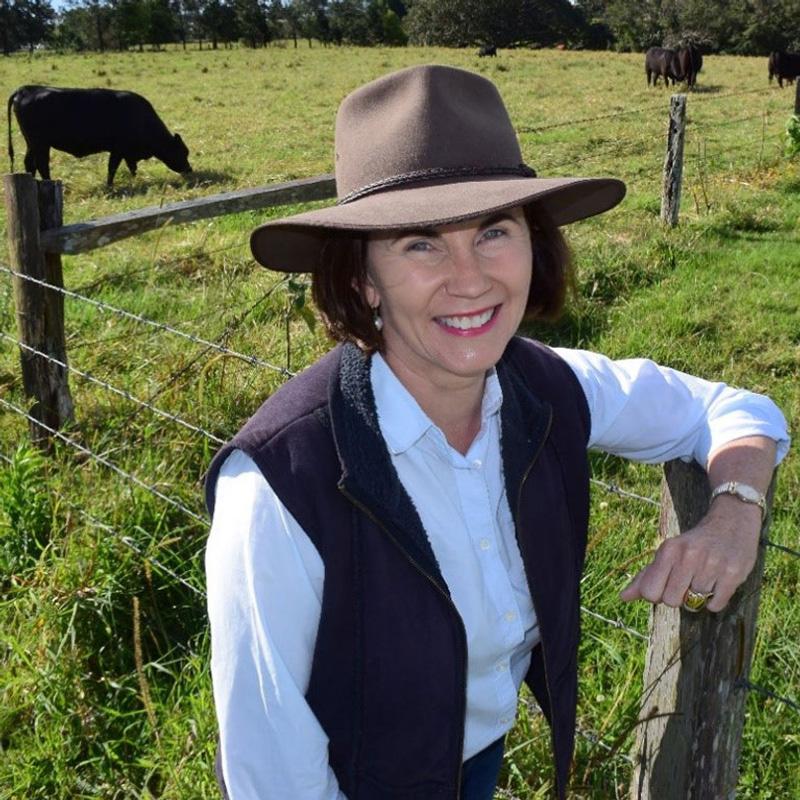
• Innovation and research: The RAA promotes sustainable innovation practices in agriculture, and works closely with academics to translate research.
The RAA, under Lorraine's leadership, has achieved tangible results and impacts aligned with multiple Sustainable Development Goals:
• Education initiatives: The first ever Bachelor of Science in Regenerative Agriculture, the Regenerative Agriculture Mentoring Program, and the Professional Learning for Agricultural and Science Educators; all aimed at empowering students and teachers to drive sustainable agriculture.
• Positive environmental impact: Regenerative practices are restoring landscapes, improving soil quality, and enhancing biodiversity across the country.
• Improved livelihoods: Farmers adopting regenerative practices have reported increased income, quality of life, and stronger community bonds.
• Economic growth: Cooperative farming initiatives have increased capacity building and regenerative practices, and have strengthened rural economies.
• Climate action: Carbon farming and regenerative practices aimed at mitigating the effects of climate change.
Innovation and Leadership
Lorraine's visionary leadership and inspiring, disruptive approach have set her apart in the agriculture industry. She championed evidencebased practices, overcame industry barriers, and played a pivotal role in creating the world's first regenerative agriculture degree. Her approach is scalable and applicable in various contexts, leaving a lasting legacy of sustainable agriculture.
Lorraine's collaboration extends to partnerships with leading organisations, governments, farmer groups, and academics nationally and worldwide. As well as having a highly sought-after public speaking reputation for motivating others, she has effectively communicated her initiatives through newsletters, websites, and social media platforms, resulting in increased engagement and knowledge dissemination.
NSW SUSTAINABILITY SUCCESS STORIES 2023 70
Responsible Supply Award
71
Banksia NFP & NGO Award

Underwear for Humanity
Planet & People first - A radical new approach to conscious consumption.
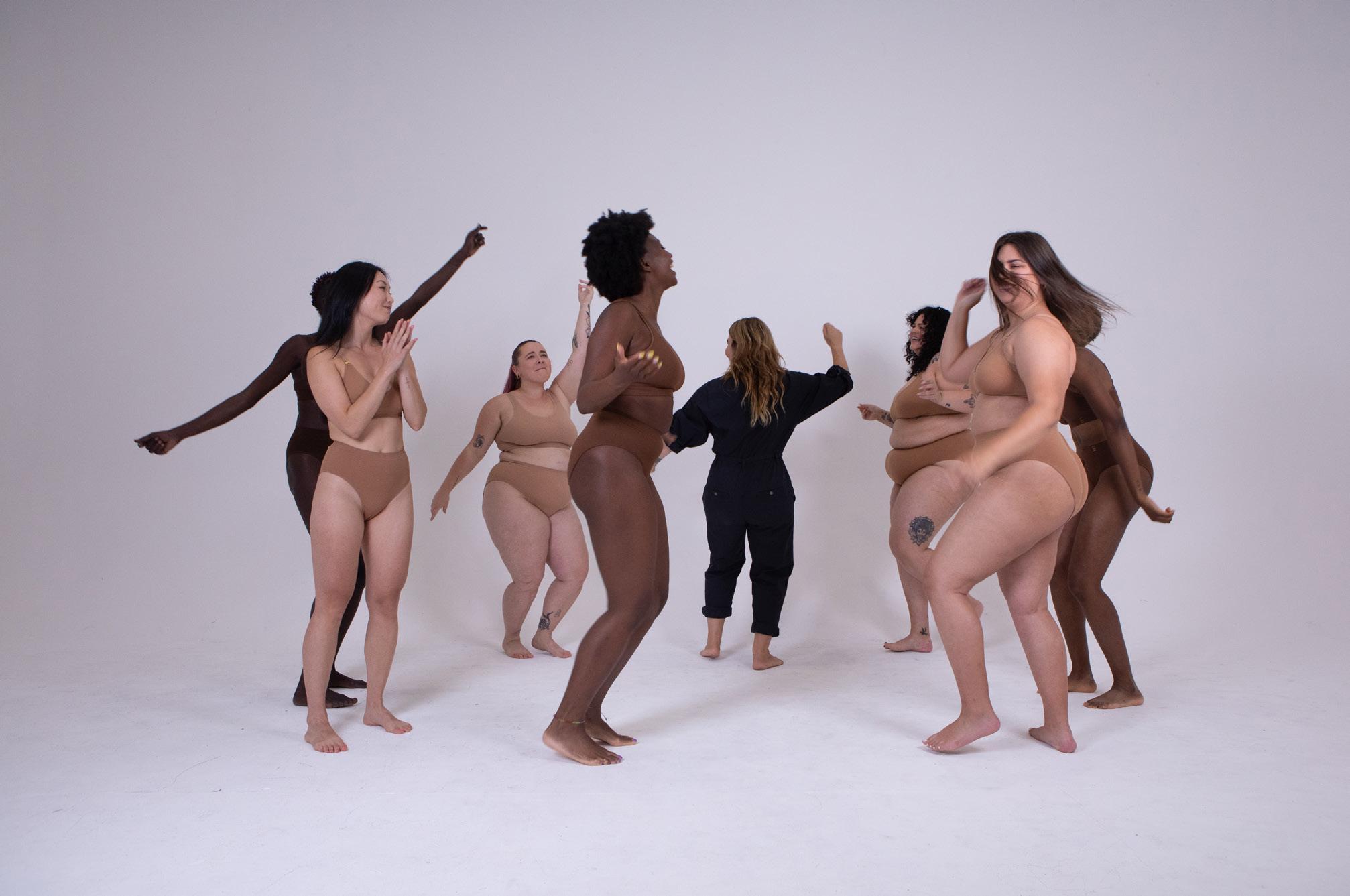
The apparel and textile industry use over 5,000 chemicals, are responsible for 8-10% of global emissions and over 20% of global water pollution. 33% of clothing purchased in Australia is discarded within one year. The rate of production and consumption
is not slowing down, it's speeding up. Underwear for Humanity (UH) is changing the industry standard on textile production, manufacturing, recycling and addressing the social impact that our current system fosters.
Website: underwearforhumanity.com.au/

















RESPONSIBLE SUPPLY AWARD
WINNER 2023

Clothing like many industries is based on a linear model, of extracting resources from the earth to create a garment, then discarding at the end of its life. Some items are donated to charity, although only 15% is sold, but underwear cannot be donated due to hygiene reasons. With 204 million underwear items being imported into Australia every year, that leaves 204 million items destined for landfillUntil now!
UH is pioneering the way forward and changing the industry as the only company that accepts underwear for recycling in Australia. As a result they have thus far processed 13,959 items, and donated 761 bras in wearable condition to the charity ‘Support The Girls’, averting from landfill. UH has plans of expansion to allow retail drop off points open to the public.
The sales of their underwear funds the recycling, but not just any underwear. Founder, Kelly Barrett has over 20 years’ experience in underwear development and is a sustainability specialist in her field. The material science used has resulted in emissions being more than half industry standard for a similar product. The brand developed its own 100% recycled elastic, it delayed their launch by 6 months and continues to delay shipments due to the unstable global supply of recycled fibre market, but compromise is not what UH represents.
Rather than operating solely for profit, they use the money from their sales to invest into the community.

This includes free underwear to people in need via their one-forone program, donating to women’s shelters and various homeless charities. 50c is paid to Aboriginal groups as rent payment for the land they work on. Their pick and pack is a partnership for a work training program.
They heavily invest in ethical production and work with certified ethical factories that pay 60% above the living wage. They are hyper focused on the reduction of fossil fuel use which resulted in an agreement with their factories to install solar to do their production.
Whilst the rest of the apparel industry ships in single use plastic poly bags, Underwear for Humanity ships in reusable shipping bags that they developed, resulting in zero waste deliveries.
UH is a 100% female owned and operated brand, it is B Corp certified and carries a long list of certifications to ensure it is a greenwashing free zone.
Whilst we are in a climate crisis and sometimes it feels like change is slow,
seeing models such as Underwear for Humanity thrive shows what is possible and how the future can be. The brand has a strong following of loyal customers that is growing 30% each six months, the more they grow the less extractive underwear brands are bought.
This new type of business model is part of the next economy where nature and humans are prioritised. Where we live as a community, supporting each other, rather than a constant bid for our money.
Working with certified ethical factories that pay 60% above the living wage
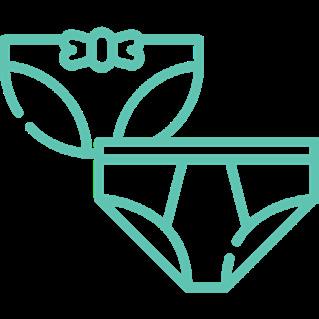
NSW SUSTAINABILITY SUCCESS STORIES 2023
74
Ventia, Transurban and Muru Mittiga
Transurban, Ventia, and Muru Mittigar collaborated to enhance Aboriginal employment opportunities on the Hills M2 motorway, while supporting further education.

In a move towards inclusive growth and sustainable development, three distinct entities - Transurban, a road operator; Ventia, a services provider; and Muru Mittigar, a Dharug-controlled non-profit, started a collaboration. Their combined mission to provide sustainable employment opportunities for Aboriginal communities and facilitate further education.
The collaboration's origins can be traced back to the individual reconciliation plans of both Transurban and Ventia. These companies identified a new way to support Aboriginal employment and engaged Muru Mittigar, a non-profit with deep roots in the Dharug community, keen on supporting its members towards financial independence.
Website: ventia.com/








75 RESPONSIBLE SUPPLY AWARD
Implementation:
The project's core was centered on the Hills M2 motorway, operated by Transurban. The plan involved employing Muru Mittigar personnel on the motorway. Concurrently, these employees would study towards a Certificate III in Parks and Gardens. This arrangement was unique for several reasons:
• Muru Mittigar's New Model
Historically, Muru Mittigar had functioned as a service provider, staying away from 'labour-hire'. This collaboration prompted them to explore this avenue, leading to the adaptation of their processes to facilitate staff outsourcing.
• Transurban and Ventia's New way of working
Neither company had previously engaged in training-style agreements. This venture required them to step out of their operational comfort zones, paving the way for apprenticeships and employment pathways they had not explored before.
No significant collaboration comes without its hurdles. Early in the project, it became apparent that one apprentice lacked a driver's license, a crucial requirement for employment on the motorway. Transurban addressed this by bringing in another First Nations partner, Kari, to provide the necessary driver training.
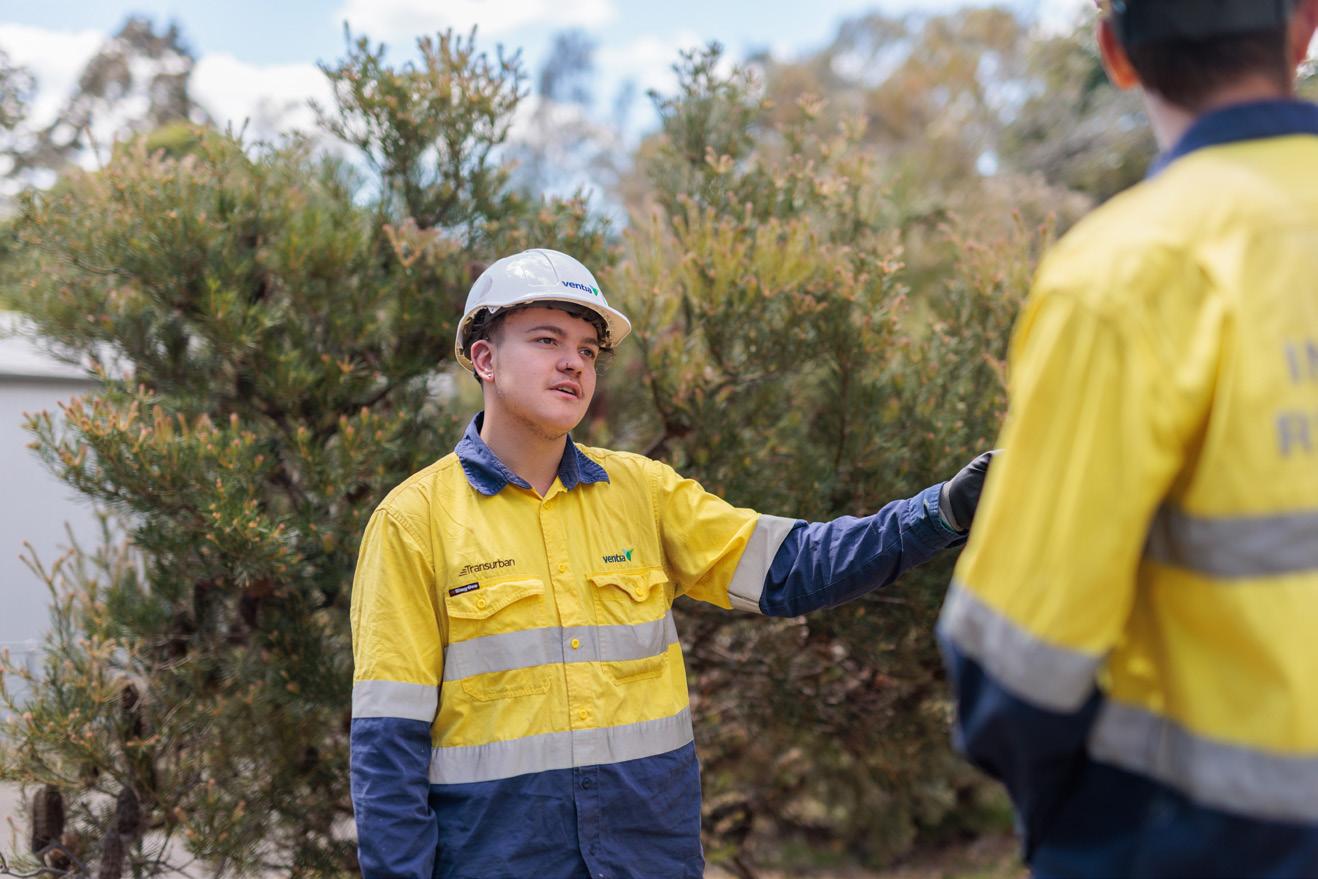
Results:
The collaboration yielded substantial results:
- From an employment perspective, Muru Mittigar employees not only worked on a major motorway but also enhanced their qualifications with the Certificate III.
- One participant, aided by the stability of his new job, made significant personal progress, moving out of home and working towards obtaining his driver's license. Another purchased a car, further eliminating employment barriers.
This collaboration between Transurban, Ventia, and Muru Mittigar has a bright future
1. Muru Mittigar's Labour-Hire Model
The non-profit now possesses a robust labour-hire model, ready to be presented to other prospective partners.
2. Transurban and Ventia's Continued Cooperation
The companies, having witnessed the benefits of their partnership, continue to explore more ESG initiatives. Their collaborative spirit extends to new contracts and potential projects, ensuring the impact created here is just the beginning.
3. Scalability
Combined mission to provide sustainable employment opportunities for Aboriginal communities and facilitate further education, with the collaboration having added over $823,000 in social value
- Beyond individual achievements, the collaboration has added over $823,000 in social value. This quantifiable impact encompasses improved financial wellbeing, personal growth, increased cultural connection, and enhanced family ties for the participants.
While this collaboration centered on the Hills M2 motorway, the model can be replicated across various sectors, amplifying its impact.
Through a focused effort, three diverse organisations turned a vision into tangible outcomes. This case study underscores the value of multistakeholder partnerships and serves as a testament to the profound change such collaborations can usher in.
NSW SUSTAINABILITY SUCCESS STORIES 2023 76
Small to Medium Enterprises (SME) Sustainable Leadership Award
77

Underwear for Humanity
Planet & People first - A radical new approach to conscious consumption.

The apparel and textile industry use over 5,000 chemicals, are responsible for 8-10% of global emissions and over 20% of global water pollution. 33% of clothing purchased in Australia is discarded within one year. The rate of production and consumption is not slowing down, it's speeding up.
Underwear for Humanity (UH) is changing the industry standard on textile production, manufacturing, recycling and addressing the social impact that our current system fosters.
Website: underwearforhumanity.com.au/















SME SUSTAINABLE LEADERSHIP AWARD
WINNER 2023
Clothing like many industries is based on a linear model, of extracting resources from the earth to create a garment, then discarding at the end of its life. Some items are donated to charity, although only 15% is sold, but underwear cannot be donated due to hygiene reasons. With 204 million underwear items being imported into Australia every year, that leaves 204 million items destined for landfillUntil now!
UH is pioneering the way forward and changing the industry as the only company that accepts underwear for recycling in Australia. As a result they have thus far processed 13,959 items, and donated 761 bras in wearable condition to the charity ‘Support The Girls’, averting from landfill. UH has plans of expansion to allow retail drop off points open to the public.
The sales of their underwear funds the recycling, but not just any underwear. Founder, Kelly Barrett has over 20 years experience in underwear development and is a sustainability specialist in her field. The material science used has resulted in emissions being more than half industry standard for a similar product. The brand developed its own 100% recycled elastic, it delayed their launch by 6 months and continues to delay shipments due to the unstable global supply of recycled fibre market, but compromise is not what UH represents.
Rather than operating solely for profit, they use the money from their sales to invest into the community. This includes free underwear to people in need via their one-forone program, donating to women’s shelters and various homeless charities. 50c is paid to Aboriginal groups as rent payment for the land they work on. Their pick and pack is a partnership for a work training program.
They heavily invest in ethical production and work with certified ethical factories that pay 60% above the living wage. They are hyper focused on the reduction of fossil fuel use which resulted in an agreement

with their factories to install solar to do their production.
Whilst the rest of the apparel industry ships in single use plastic poly bags, Underwear for Humanity ships in reusable shipping bags that they developed, resulting in zero waste deliveries.
UH is a 100% female owned and operated brand, it is B Corp certified and carries a long list of certifications to ensure it is a greenwashing free zone.
Whilst we are in a climate crisis and sometimes it feels like change is slow, seeing models such as Underwear for Humanity thrive shows what is possible and how the future can be. The brand has a strong following of loyal customers that is growing 30% each six months, the more they grow the less extractive underwear brands are bought.
This new type of business model is part of the next economy where nature and humans are prioritised. Where we live as a community, supporting each other, rather than a constant bid for our money.
This new type of business model is part of the next economy where nature and humans are prioritised

NSW SUSTAINABILITY SUCCESS STORIES 2023 80
Joonga Land and Water Aboriginal Corporation
Joonga Land and Water Aboriginal Corporation: Self-Determination in Action to Heal Sea-Country.

University of Wollongong - Blue Futures Translational Research Initiative, NSW DPI MEMS 4 Program
Aboriginal communities on the New South Wales South Coast have been advocating for their cultural rights on Sea Country for decades.
Sea Country is an Aboriginal concept that encompasses every part of the coastline, including freshwater, ‘bitter’ water and salt water, land and beaches, animals and plants, seasons, weather, sky, and people.
Website: nar-oo-maaboriginaltours.com.au/










81 SME SUSTAINABLE LEADERSHIP AWARD
The initiative Joonga was spearheaded by Traditional Owners Wally Stewart and Rob Chewying and established out of NSW South Coast Fishing Rights Group, advocating for Aboriginal community rights to practice traditional fishing methods, cultural connection to Sea Country and the ability to engage in the commercial fishing industry.
In July 2020, Traditional Owners (TOs) from Walbunja Country (i.e., from Bateman’s Bay to South of Narooma on the NSW South coast) created Joonga, an Indigenous-owned not-for-profit startup to empower their community to exercise selfdetermination on their ancestral lands.
Joonga means octopus, which spoke to the idea of an organisation that would have multiple revenue streams to assist Aboriginal economic development opportunities. Joonga is now operating at a surplus with an annual turnover close to $1 million and $½ million worth of assets within only a 1.5 year timeframe.
Joonga is unique across Australia as it is independent of Land Councils and Native Title. Joonga is currently servicing eight governmental contracts that take urgent action to combat climate change and its impacts, which also benefits the organisation and wider community by providing opportunities for economic growth (UN SDG8) and reduced inequalities (UN SDG10). Working on and contributing towards healing Country promotes better well-being in the Walbunja Aboriginal community. The involvement of the community through Joonga in projects helps to maintain a distinctive cultural, spiritual, physical, and economic relationship with their ancestral lands and waters. Also, Joonga has noticed that a cultural and spiritual connection to Sea Country is vital for the long-term prospect of permanent employment. Being able to offer jobs to the Aboriginal community that are on Country and are targeted at caring for and restoring of country will make a significant difference to the overall well-being of the community.

The Joonga board chaired by Wally Stewart have identified a pragmatic approach to reduce some of the inequalities experienced on Walbunja country. The TOs took matters into their own hands to drive and deliver on building a social enterprise that creates jobs on Sea Country for Aboriginal people. This has promoted self-determination for their own community through the creation of decent and culturally appropriate work on and in the water. Innovation also lies in the established value network existing of Joonga, NSW DPI MEMS 4 program and UOW BF-TRI. The network aligned on the mission to drive culturally appropriate change in Aboriginal communities. It has achieved a lot in a fairly short amount of time due to an innovative strengthbased approach. The business model is designed to be replicable and transferrable to other Aboriginal communities. Mission to drive culturally appropriate change in Aboriginal communities

NSW SUSTAINABILITY SUCCESS STORIES 2023
82
Randwick City Council
Strengthening and expanding community resilience and sustainability through a creative and innovative environmental levy program.
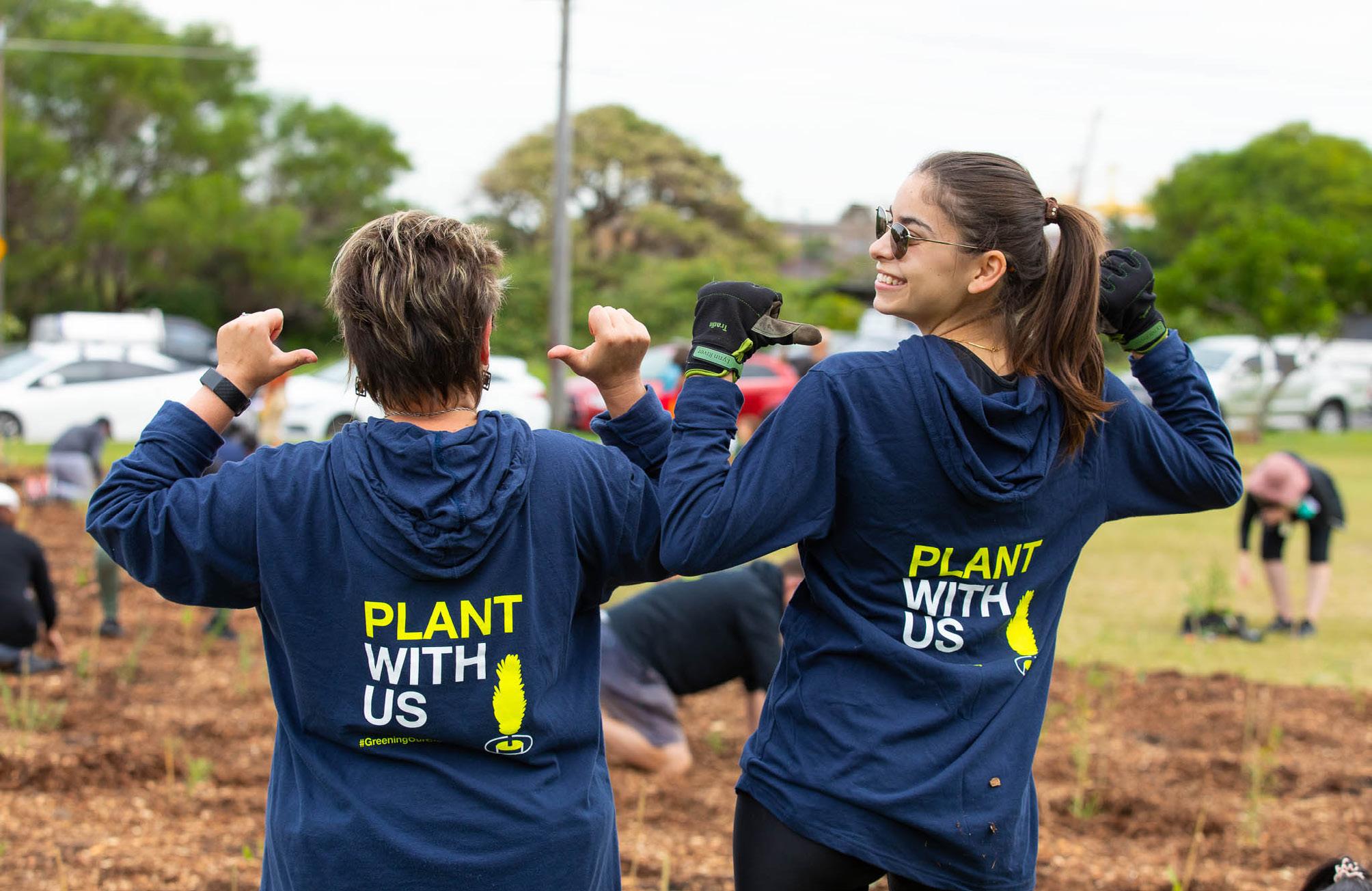
Randwick Council’s Sustainability Rebates have been developed to incentivise residents and businesses to implement energy, water and emission saving initiatives that suit their current budget and circumstances in their homes and businesses.
Website: randwick.nsw.gov.au/










83
SME SUSTAINABLE LEADERSHIP AWARD
Residents and businesses can choose from any of 13 different types of sustainability rebates, each selected for their application in the home or workplace and capable of achieving measurable and meaningful results in terms of reducing energy or water use as well as the costs associated with this usage and greenhouse gas emissions occurring as a result.
These currently available rebates include: electric vehicle chargers, energy assessments, hot water systems, induction cooktops, insulation, lighting, pool pumps, rainwater tanks, rooftop solar, solar batteries, solar health checks and WaterFix®. New rebates can be added subject to them adding value as per the benefits or savings mentioned above.
Commencing at the end of 2020, Randwick’s sustainability rebates provide approximately $200,000 annually. However, for each rebate dollar provided the leverage ratio is in the range of $11 and $14 as to the spend on new energy and water saving measures. The cumulative result to date shows that the $600,000 provided in sustainability rebates has resulted in almost $6.5 million of new energy and water saving actions around Randwick homes and businesses. Council has recently celebrated its 1,000th sustainability rebate.
Feedback from participating residents has confirmed they would recommend the straightforward eligibility requirements and payment process to other residents. More than 50% of rebates provided so far have been for rooftop solar with the next highest represented by solar battery storage and electric vehicle chargers.
While a fuller listing of savings, benefits and costs for Randwick’s sustainability rebates can be viewed on the dashboard of results on Council’s website, the summary of savings show more than 6,000 tonnes of greenhouse gas emissions are saved each year (tCO2-equivalent) and more than $1 million is being saved from the energy and water bills of residents and businesses on an annual basis.

Overall results show the breakdown for Randwick’s sustainability rebates:
• 72 electric vehicle chargers
• 28 energy assessments
• 47 hot water systems
• 22 induction cooktops (launched Feb 2023)
• 69 insulations
• 65 lighting upgrades (1,853 lights)
• 15 pool pumps
• 22 rainwater tanks
• 551 rooftop solar installations (4,538 kW)
• 85 battery installations (1,007 kWh)
• 16 solar health checks
• 8 WaterFix upgrades
More than $1 million is being saved from the energy and water bills of residents and businesses on an annual basis
NSW SUSTAINABILITY SUCCESS STORIES 2023
84
Sustainable Tourism Award
85

Take 3 for the Sea
Ground Swell is a coordinated, whole-of-industry approach to rolling out litter prevention strategies for the NSW visitor economy industry.

Beautiful litter-free destinations attract visitors. High concentrations of litter significantly impact locations by discouraging visitors, impacting economies and harming wildlife.
Take 3 for the Sea‘s Ground Swell program envisions litter-free destinations; empowering the Visitor Economy Industry (VEI) to prevent and reduce the impact of visitor litter and waste. Ground Swell educates and inspires businesses to be responsible for litter/waste prevention and to encourage their domestic and international visitors to do likewise.
Ground Swell’s goal is to inspire ownership of visitor litter by creating awareness, inspiring partnerships, and developing resources to enable VEI businesses to address their litter issues. Ground Swell is an Environment Protection Authority, Waste Less Recycle More initiative funded by the waste levy.
Website: take3.org/




87
SUSTAINABLE TOURISM AWARD
WINNER 2023
Ground Swell’s significant impact on long-term litter reduction in the NSW VEI, contributes to SDGs 14 and 6 by reducing the amount of litter entering NSW waterways, SDG 12 by raising visitors’ awareness of responsible consumption/waste disposal, SDG 13 by informing visitors of the plastic/ climate change connection and SDG 17 inspiring partnerships to reach the goals.
Industry leaders have joined forces with Take 3 to inspire and empower the industry to own it and act on litter with the development of the NSW VEI Litter Prevention Strategy and Litter Reduction Toolkit or resources.
Over 54,000 visitors have already been educated on visitor litter as a direct result of Ground Swell. 160 NSW VEI businesses have so far engaged in the program with inspiring results.
Economic
Glenworth Valley: reported 15% reduction in litter; collected 22,180 items in ‘Return and Earn’ containers, preventing landfill/litter and generating $2,218.
Youthworks: reported bottom-line improvements by eliminating plastic wrap and packaging for lunches. "Often organisations have this false idea that change will be big and costly but this project showed us that it's not the case“ Sophie Fenner, Youthworks Christian Outdoor Education
Environmental
Southern Cross Kayaking: eradicated 100% of single-use plastics; removed 20kg of litter per Colo/Hawkesbury tour; and reported a 20% reduction in litter around Ganguddy-Dunns Swamp, Wollemi National Park.
Melaleuca Backpackers: reported 4,205 pieces or 131.5kg of litter collected over 15 trips and encouraged guests to Take 3.
Social
C Change Adventures: educated 3000+ visitors on litter prevention by including litter prevention/actions in their communications and face-toface storytelling.

Melaleuca Backpackers: reported 100% of guests (2,800) educated in litter prevention; requested their linen provider not wrap clean linen in plastic and use a reusable bag; and advised guests how to separate waste correctly.
Ground Swell's innovation is in the bottom-up approach that takes participants beyond the obvious ‘first aid’ of litter clean ups to active litter prevention, providing a valuable deeper layer of education to those dependent on tourism in any natural ecosystem.
The program’s strategy takes an industry and sector approach, creating awareness and engaging VEI businesses/stakeholders who subsequently educate their visitors to own it and act on litter.
Active Litter prevention hubs have formed organically due to the collaborative nature of the program, resulting in communities leading and empowering others to take action and demonstrate pride in their destination.
Over 54,000 visitors have already been educated on visitor litter as a direct result

NSW SUSTAINABILITY SUCCESS STORIES 2023 88
Kestrel Nest EcoHut and Highfield Farm & Woodland
Kestrel Nest EcoHut and Highfield Farm and Woodland offer a compelling vision of and model for how eco-tourism, farming for biodiversity, reconciliation and habitat conservation can work together for mutual benefit.

Armed with nothing more than a love of the environment and concern for climate change and the extinction crisis, Louise Freckelton and David Bray left their inner-city Sydney home for Highfield 820 acres (333 hectares)
of land near Adelong NSW. They chose Highfield as two-thirds of the property was secured under a conservation covenant protecting critically endangered Box Gum Grassy Woodland. To honour this endangered habitat, they renamed the property Highfield Farm and Woodland.
Website: highfieldfarmwoodland.com









89 SUSTAINABLE TOURISM AWARD
From the start, there was no grand plan. As they got to know the property, they saw opportunities for farm enterprises that leveraged and complemented their environmental goals. They realised that farm income and habitat protection need not be mutually exclusive. The driving force for all subsequent business development therefore had to complement, promote and enhance their conservation mission. Their insight that farming and conservation should not be seen as opposites meant they began to think of the whole property differently. The 1/3 farmland and 2/3 protected woodland, were no longer considered separate realms, but rather a continuum of degraded landscapes that equally demanded conservation action. In short, they decided to turn the entire property into a conservation area. But this did not mean they had given up on farm business. On the contrary, they reconceived their grazing paddocks as sites for the regeneration of native grasslands and paddock tree restoration enhancing, rather than undermining, their prime lamb business.
In 2019 they began to build Kestrel Nest EcoHut an off-grid and offline nature retreat powered by solar panels and battery storage. Supremely insulated and using timber sourced from the property and recycled materials where possible, Kestrel Nest is a model for sustainable living and provides the perfect platform for guests to turn off from screens, re-connect with nature, learn about farming with habitat and view the incredible bird diversity on Highfield Farm and Woodland.
Since 2012, with no previous experience in agriculture or tourism, they have established an awardwinning gourmet lamb business and a successful eco-tourism business –Kestrel Nest EcoHut and Farm Tours, while nurturing the farm through the challenges of climate change, including drought, bushfire and flood.
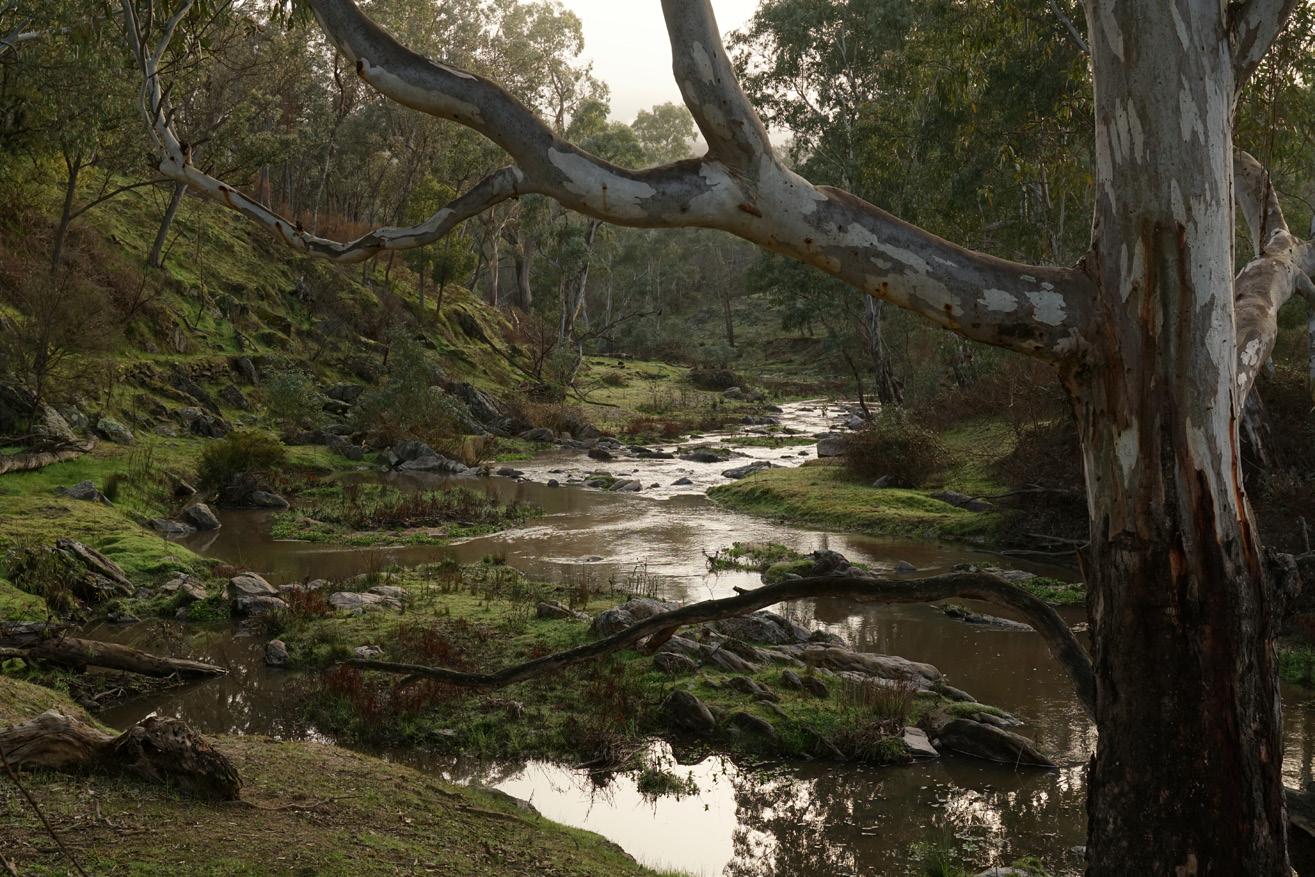
The restored native grasslands on their stunning property is now a magnet for artists and dancers including arts projects by First Nations artists keen to perform on Country and sound recordists eager to capture the sounds of biodiversity on critically endangered habitat.
Highfield Farm and Woodland and their guest accommodation Kestrel Nest showcase just what is possible when eco-accommodation is only a small part of a property-wide ecoendeavour.
Host to around 141 bird species and an increasingly diverse area of critically endangered Box Gum Grassy Woodland habitat, Kestrel Nest EcoHut and Highfield Farm and Woodland offer a compelling vision of and model for how eco-tourism, farming, reconciliation and habitat conservation can work together for mutual benefit.
Host to around 141 bird species and an increasingly diverse area of critically endangered Box Gum Grassy Woodland habitat

NSW SUSTAINABILITY SUCCESS STORIES 2023
90
Thredbo Resort
Kosciuszko Thredbo Pty Ltd operates Thredbo Alpine Resort within Kosciuszko National Park, one of Australia’s most beautiful and sensitive natural settings, and their innovative environmental initiatives cover all aspects of resort operations in order to preserve the unique alpine backyard for future generations.
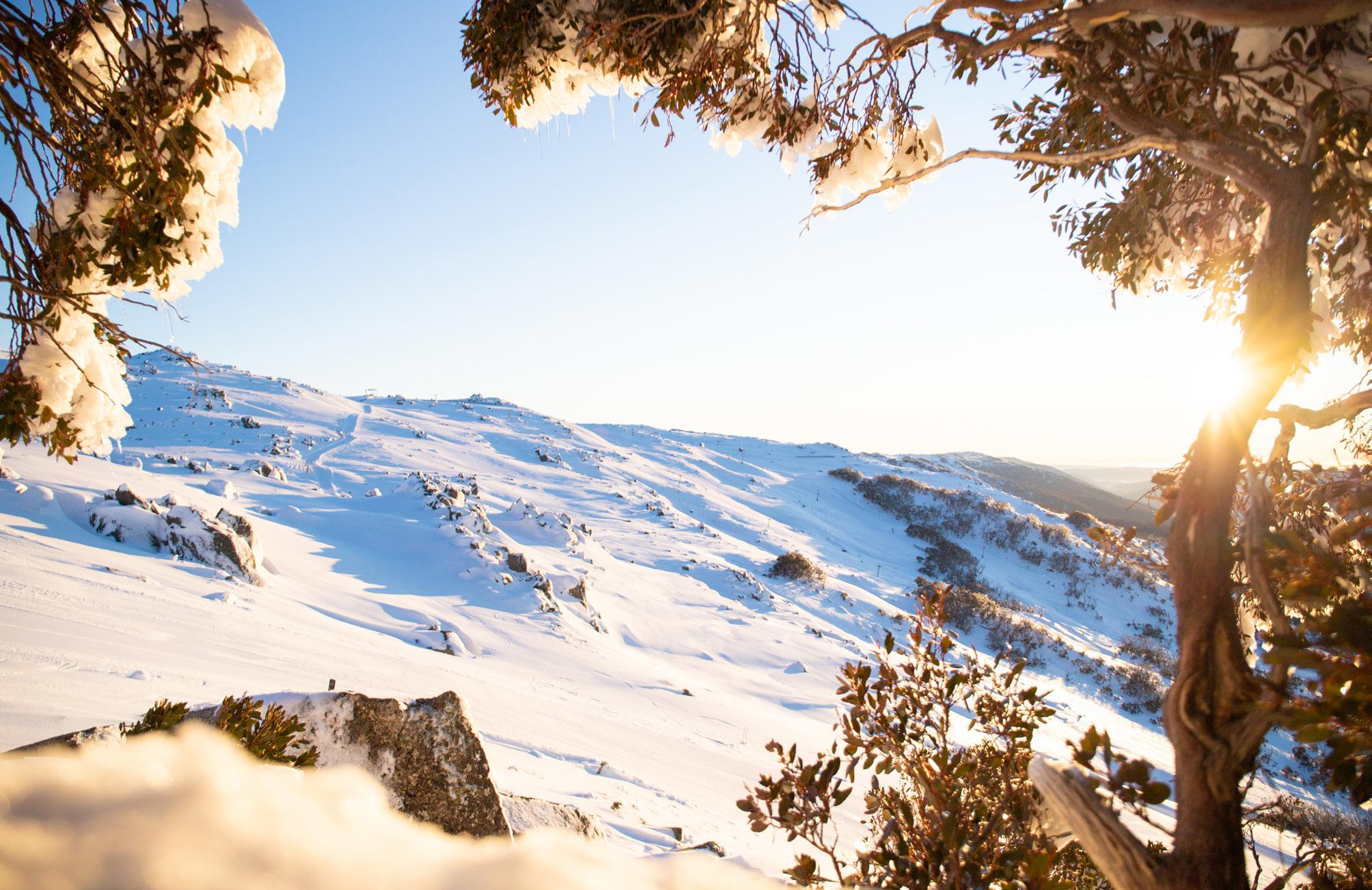
Kosciuszko Thredbo Pty Ltd (KT) is the operator of Thredbo Alpine Resort and sits as the responsible authority of Thredbo Village. Located in the magnificent Kosciuszko National Park in the NSW Snowy Mountains, KT is the proud custodian of unique and delicate alpine ecosystems, whilst also being
amongst the headwaters of the mighty Snowy River. KT benefits from having decades of operational experience to utilise for strategic planning purposes. When deciding on new directions to take, or the updating of processes, KT uses this experience across the business to help drive change and improve the sustainability of operations.
Website: thredbo.com.au/








91
SUSTAINABLE TOURISM AWARD

KT’s current sustainability goals are available publicly and include establishing carbon neutrality for the business, reducing waste-to-landfill generation, and reducing freshwater consumption. The Environmental Services Department within KT collaborates with all operational departments to manage every aspect of environmental protection, such as native flora planting, degraded site rehabilitation, environmental assessments regarding development planning, and preventative strategies to ensure land, water and air remain unpolluted and enjoyable for generations of visitors.
KT’s efforts to reduce greenhouse gas emissions across the board include introducing technology to the slope grooming fleet in the form of the proprietary “SNOWsat” satellite positioning system, allowing each machine to reduce fuel usage and improve running times, purchasing renewable electricity from resort partner Red Energy, and utilising a 100kW solar array at Thredbo’s Leisure Centre. The purchasing of renewable electricity alone has eliminated the production of thousands of Scope 2 greenhouse gas emissions.
KT is committed to supporting the local Snowy Mountains community, on which it heavily relies for employment and the provision of services. This commitment is provided
in financial and in-kind support for local schools and sporting clubs, as well as through the provision of staff accommodation for seasonal and year-round employees. Collaboration with the local Thredbo and Snowy Mountains communities on aspects of sustainability is a key part of KT efforts, with beneficial relationships and projects being developed over the decades of operation.
KT has been continually certified by EarthCheck since 2012 and has been at Gold level for three years. This recognises the continued improvement across all EarthCheck’s assessment criteria, and the hard work in collaboration from
all KT departments throughout the business. EarthCheck is the world’s leading certification for sustainable destinations and tourism organisations, and KT is the only alpine resort in the world to adhere to this rigorous certification. The process involves data collection, benchmarking, self-assessment, and on-site auditing in key performance areas including, but not limited to, energy, greenhouse gas emissions, wastewater management, ecosystem conservation and social and cultural sustainability. It measures the business against a comprehensive set of environmental standards and provides certification that the business has met the criteria.
Looking into the future KT is committed to continuing the sustainability journey across all environmental, cultural, social, and economic factors, with new projects in the pipeline, continual improvements to existing projects and processes, and an increased focus on summer visitation to create stable economic conditions for the region year-round.
Committed to continuing the sustainability journey
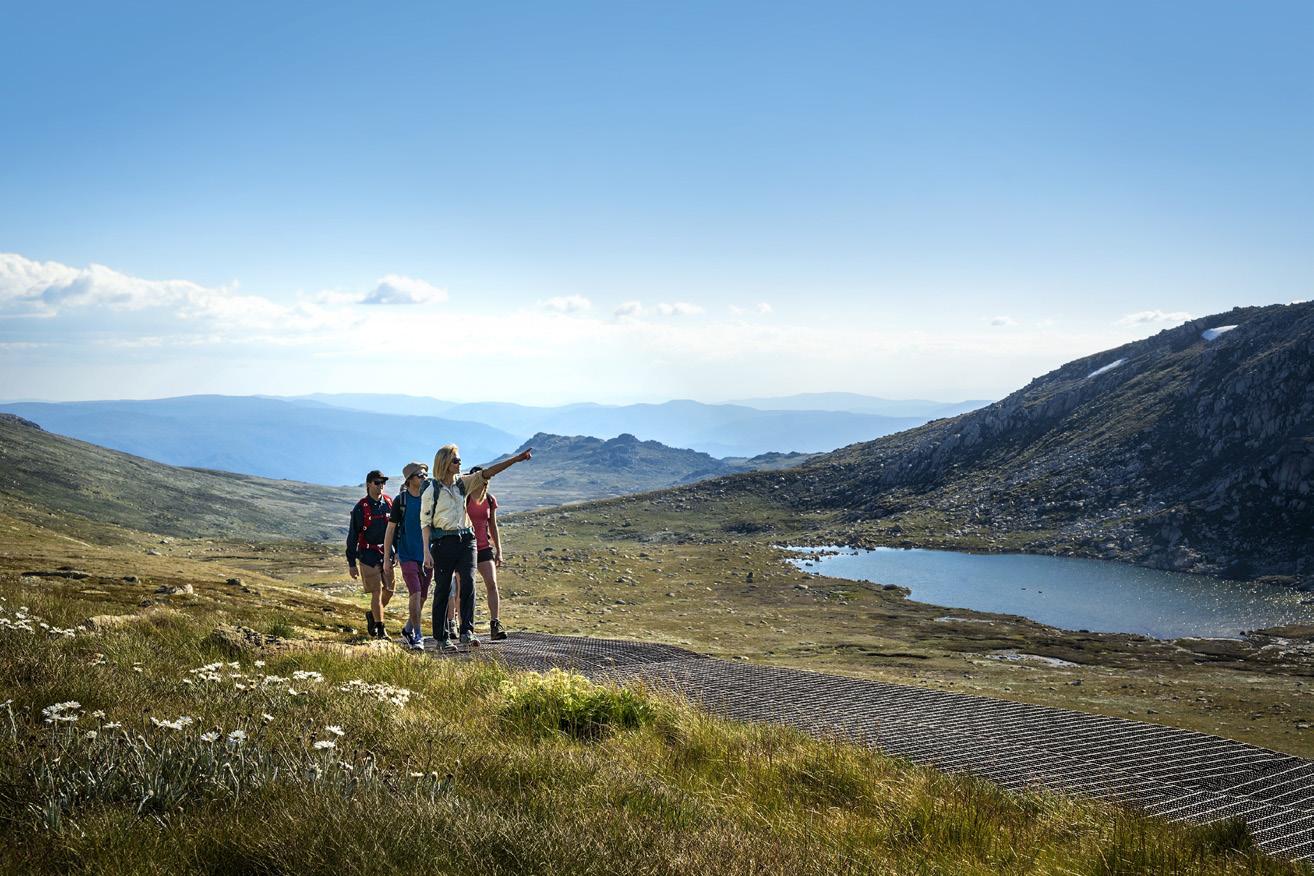
NSW SUSTAINABILITY SUCCESS STORIES 2023 92
Taronga Conservation Society Australia
Taronga Conservation Society Australia - securing a shared future for wildlife and people.

Taronga is a not-for-profit conservation organisation that runs two of the State’s most iconic tourism destinations –Taronga Zoo and Taronga Western Plains Zoo. We engage with more than 1.5 million people each year.
We work on the frontline to save wildlife through more than 60 conservation science programs and the treatment of 1,500 native animals each year. Our zoos create experiences that delight and inspire lasting connections between wildlife and people. We aim to create conservation advocates that value wildlife, speak up for nature and take action to help create a future where both people and wildlife thrive.
Website: taronga.org.au/









93
SUSTAINABLE TOURISM AWARD
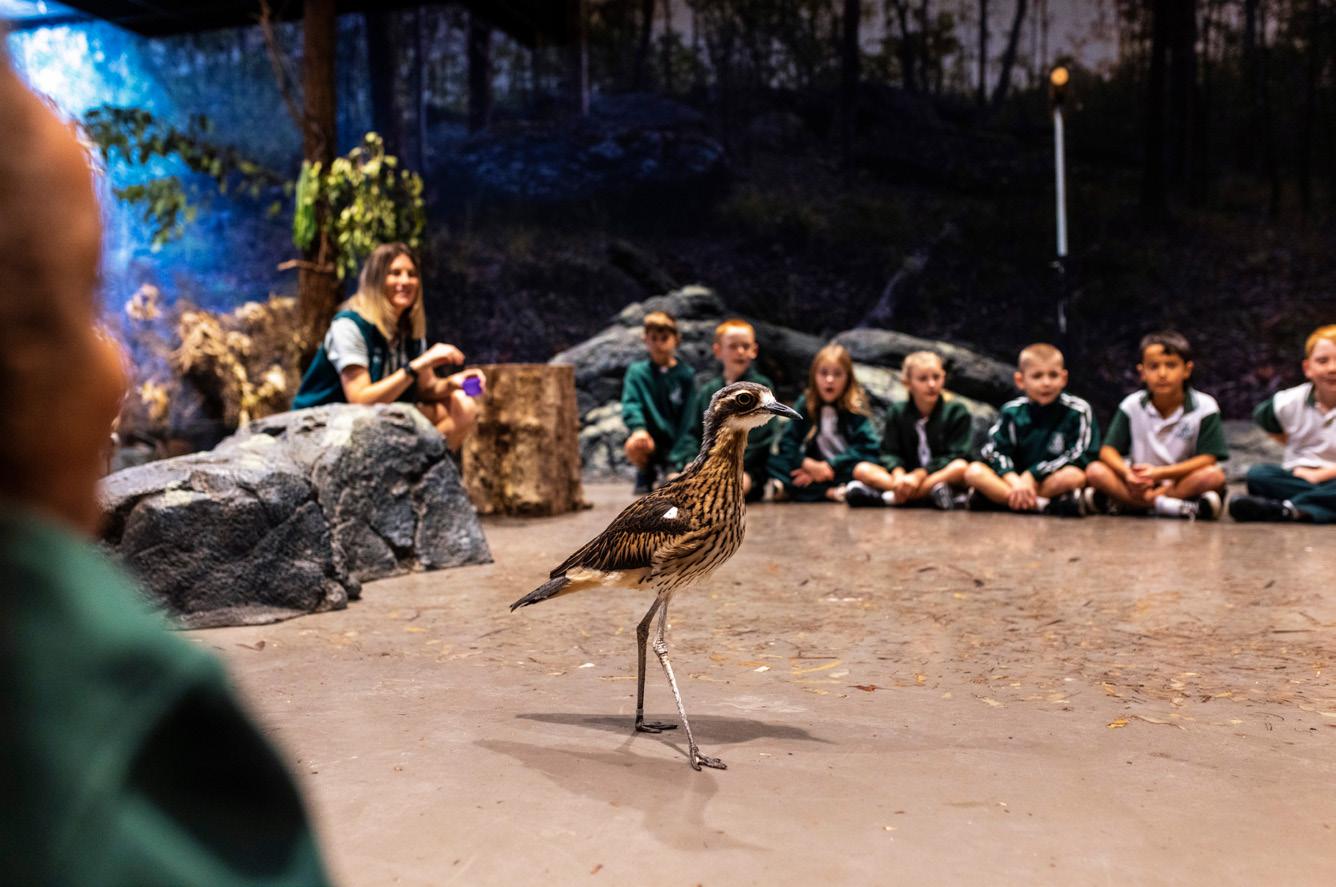
Our Strategic Plan 2021–25 was developed by the clear need for change and uses the United Nations Sustainable Development Goals (UN SDGs) as a framework for aligning efforts for positive global outcomes. We are proud of our achievements:
• In 2022, we were the first zoo in NSW to be powered by 100% renewables. This has reduced our carbon emissions by 50%.
• 5 million+ containers have been recycled through Taronga's Return and Earn reverse recycling station.
• Receiving Marine Stewardship Council (MSC) Wave of Change Public Engagement Award in 2018, 2019 and 2020. Taronga
partnered with OneFishTwoFish to return two fish to the ocean, for every one fish consumed by our animals, investing in ocean conservation projects that measurably improve fish populations and marine life.
• Taronga Western Plains Zoo, Dubbo is the anchor attraction for the Dubbo region, responsible for:
- driving an estimated 80% of visitation and a key contributor to the regional visitor economy valued at over $400M annually.
- Employing 300 local staff members
• We have been delivering against our Reconciliation Action Plan

since 2012. We commit ourselves to the ongoing process of Reconciliation within our field; to respect, connect, consult, and be led by the complex and vital knowledge of First Nations Peoples as we urgently work to safeguard the future of our planet.
• Education is core to Taronga’s 360-degree approach to conservation, which targets wildlife, habitats and the community. We offer a range of education and learning programs for primary and secondary school students through to tertiary, vocational and teacher professional development.
• Taronga scientists, conservation officers and partner organisations have conducted multidisciplinary programs under a unified mission of increasing understanding and protection of wildlife through investigation, evidence-based application and communication of science to the community. This includes:
- Reintroducing ten Platypus into the Royal National Park, where they have been locally extinct for 50 years.
- Securing the genetic diversity of corals from the Great Barrier Reef.
• Partnering with TRAFFIC Southeast Asia to support illegal wildlife trade monitoring, and in partnership with Interpol and local enforcement agencies, confiscation of illegally traded wildlife.
• Our plans for the future include:
- Restoring Koala habitat, targeting critically endangered Box-gum Grassy Woodlands.
- Safeguarding the platypus against extinction through two Platypus Rescue, Refuge and Research Centres.
- Building two teaching wildlife hospitals which will provide state-of-the-art facilities for conservation medicine, spaces for wildlife rehabilitation and emergency response.
NSW SUSTAINABILITY SUCCESS STORIES 2023 94
Messages From The 2023 NSW Sustainability Awards’ Supporters
95
95
96

AV1 proudly partners with the NSW Sustainability Awards, aligning our commitment to sustainability and community enrichment with the esteemed Banksia Foundation. For over seven years, AV1 has been a certified B Corp, emphasising social impact and eco-conscious practices in the events industry. With a diverse portfolio spanning Australian and international brands, AV1 specialises in audio visual and technical production services, delivering innovative solutions for events of all scales.
Our purpose is to enrich our communities through creativity and technological expertise, fostering meaningful connections and inspiring positive change. Through our partnership with Banksia Foundation, we aim to amplify our impact and support sustainability leaders across Australia and beyond.
As a trusted partner for Australian and international organisations, AV1 is honoured to contribute to the success of the Banksia National Sustainability Awards and congratulate all the inspiring individuals and organisations featured in the 2023 NSW Sustainability Awards Success Stories publication.
97

MCI is an events & engagement agency. We help our clients engage and activate their audiences through live events & experiences, digital engagement, strategic communications, and consulting. We believe that sustainable events can be transformative forces, enhancing quality, efficiency, participant experiences, and fostering innovation. MCI's holistic sustainable event design approach not only reduces costs and environmental impacts but also strengthens brand reputation and leaves lasting social legacies.
With our expertise in engagement and community building, we help our clients motivate, incentivise, collaborate, grow and interact with their audiences. This synergy of experience and integrating intelligence delivers powerful engagement, activation, creative and strategic thinking.
Shape Your Tomorrow with MCI. www.wearemci.com
98 NSW SUSTAINABILITY SUCCESS STORIES 2023

The Australian National Maritime Museum is proud to be a partner of the 2023 NSW Sustainability Awards.
The Museum is Australia’s museum of the sea. It is a place to explore our relationship to the saltwater and freshwater that surrounds us and provides us life. We explore topics of maritime heritage, ocean science and sustainability, migration, commerce, archaeology, culture and lifestyle.
We want to spark curiosity and conversations about how waterways have shaped our world and continue to transform us today. It is a place to dive deeper into the nation’s rich maritime heritage that binds us together.
The Museum believes in a sustainable future for our waters and our world and is proud to have committed to a 10-year program in support of the UN Decade of Ocean Science for Sustainable Development which allows us to work with research, innovation and knowledge partners across Australia and the globe to increase ocean literacy.
99

The UNAA NSW is pleased to have collaborated on the NSW Banksia Awards in 2023.
The UNAA NSW Sustainable Development Pillar saw a list of nominees and winners dedicated to our New South Wales environment on diverse levels of commitment to aim for a resilient and sustainable future through innovative solutions and environmental conservation. A further commitment to the NSW Banksia Awards will highlight the continued sustainably dedicated mindset of our communities through Sustainable Development and youth engagement with our UNAA NSW Schools Program.
Our collective spirit of alliance is a pertinent reminder of what the United Nations Australia Association stands for in its mission to promote the Sustainable Development Goals for inclusion, adaptation, and climate action in New South Wales.
100 NSW SUSTAINABILITY SUCCESS STORIES 2023
Banksia Sustainability NSW Awards Honour Roll
2022
Minister's Young Climate Champion Award
St Brigid's Primary School
Biodiversity Award
ANU Sustainable Farms
Circular Transition Award CurbCycle
Clean Technology Award
MCi Carbon
Communications for Impact Award Hunter Water Corporation
Future Cities Award
Sydney Metro
Large Business Transformation Award
Port Authority of New South Wales
Net Zero Action Award
UNSW Sydney
Primary Industries and Regional Development Award ProAgni
Small, Medium Enterprises Transformation Award Swag Australia
Youth as our Changemakers Award
Climate Wise Agriculture
Joshua Gilbert
2021
Minister’s Young Climate Champion Award
Kya's Bushfire Recovery Community Seed Bank
Biodiversity Award
Sydney Institute of Marine Science
Circular Transition Award
Planet Protector Packaging
Clean Technology Award
Degnan Constructions
Large Business Transformation Award
Sydney Opera House
Net Zero Action Award
Hunter New England Local Health District
Small and Medium Enterprise Transformation Award Green Eco Technologies
Youth as Our Changemakers Award Seaside Scavenge
101
-
102 NSW SUSTAINABILITY SUCCESS STORIES 2023
Banksia Sustainability Awards Judges
The Banksia Judging and Awards Governance Committee is heavily underpinned by the dedicated individuals that give up their time and expertise in order to review each entry. These individuals have been selected for their expertise and their commitment to Banksia’s mission of identifying and celebrating Australian leadership.
The Banksia Foundation would like to thank our judges - over 50 of thembased right around Australia. These judges are independent to the Banksia Board and Staff. It is of the utmost importance for the Foundation to maintain the independence of the judging process and this is fundamental to the integrity of the Banksia Awards. The judges are all specialists in their field and the judging panels are constructed so that each judge is assigned to a category, which matches their expertise. All potential conflicts of interest are declared from the outset and these judges do not take part in that particular entries assessment.
Banksia would like to acknowledge our Head of the Audit and Risk Committee, Jo Cain. Her commitment and support along with the other Audit and Risk Committee members is invaluable and ensures that we maintain a viable, efficient and reputable judging process.
On behalf of the Banksia Foundation we would like to thank the following individuals who have provided their time and expertise in judging the 2023 NSW Sustainability Awards:
Belinda Cheelingworth
Sue King
Garth Lamb
Jeff Oatman
Will Rayward Smith
Tom Davies
Angela Crossland
Izabella Kobylanski
Jack O’Donoghue
David Rowlinson
Laura Hamilton -O'harra
Liane Rossler
Katherine Featherstone
Andrea Spencer-Cooke
Robin Mellon
Mark Caddey
Kate Harris
Chris Bourne
Erandi Samarakoon
Marnie Kikken
Lucinda Corrigan
Monica Richter
Ed Cotter
Turlough Guerin
Emma Treadgold
Peter Salhani
103

For all enquiries please contact:
Banksia Foundation
E: hello@banksiafdn.com
www.banksiafdn.com
NSW SUSTAINABILITY SUCCESS STORIES 2023




























 The Hon Penelope Sharpe MLC
The Hon Penelope Sharpe MLC







































































































































